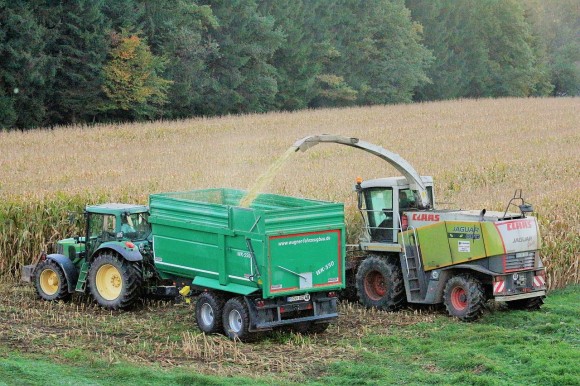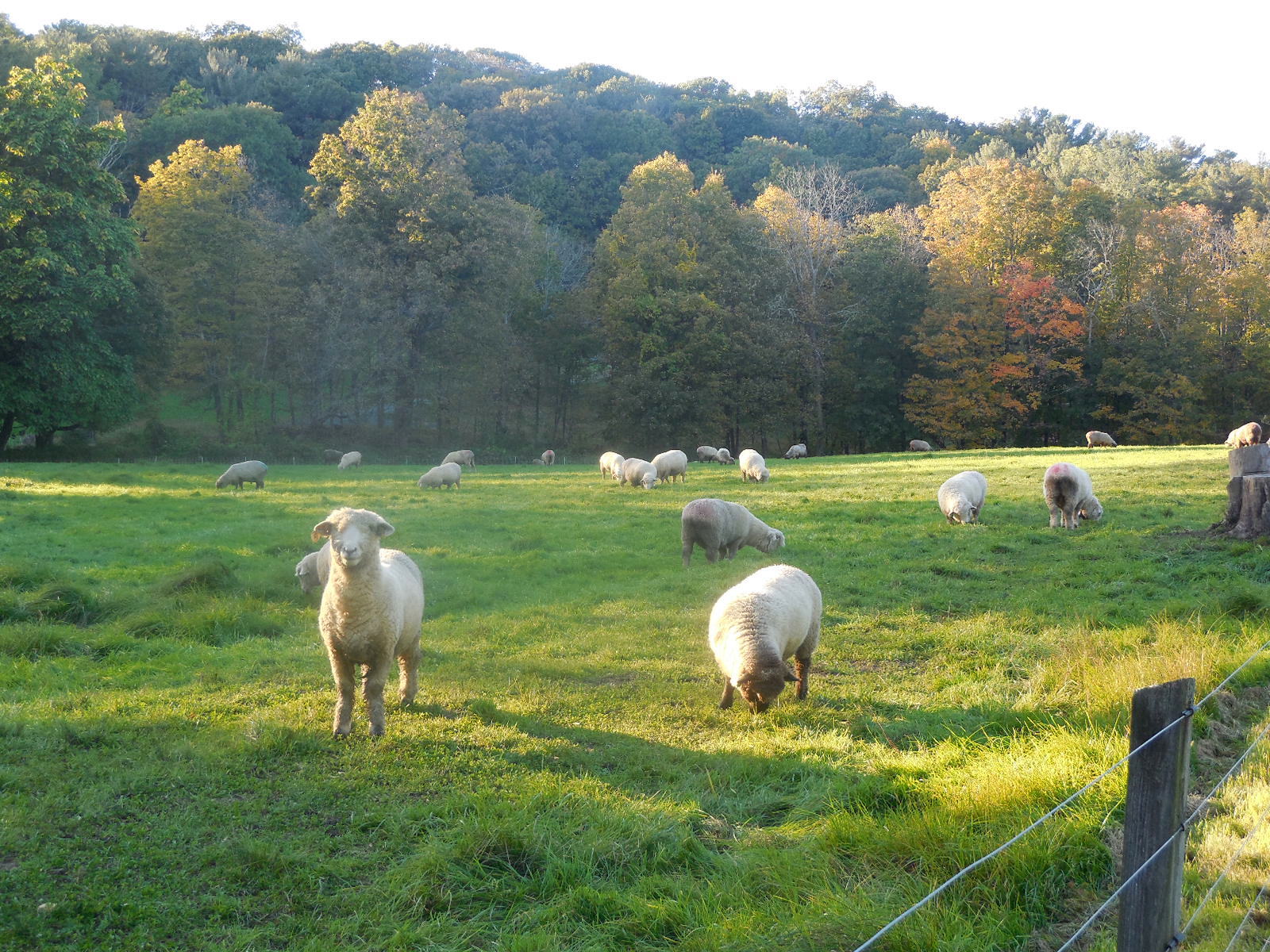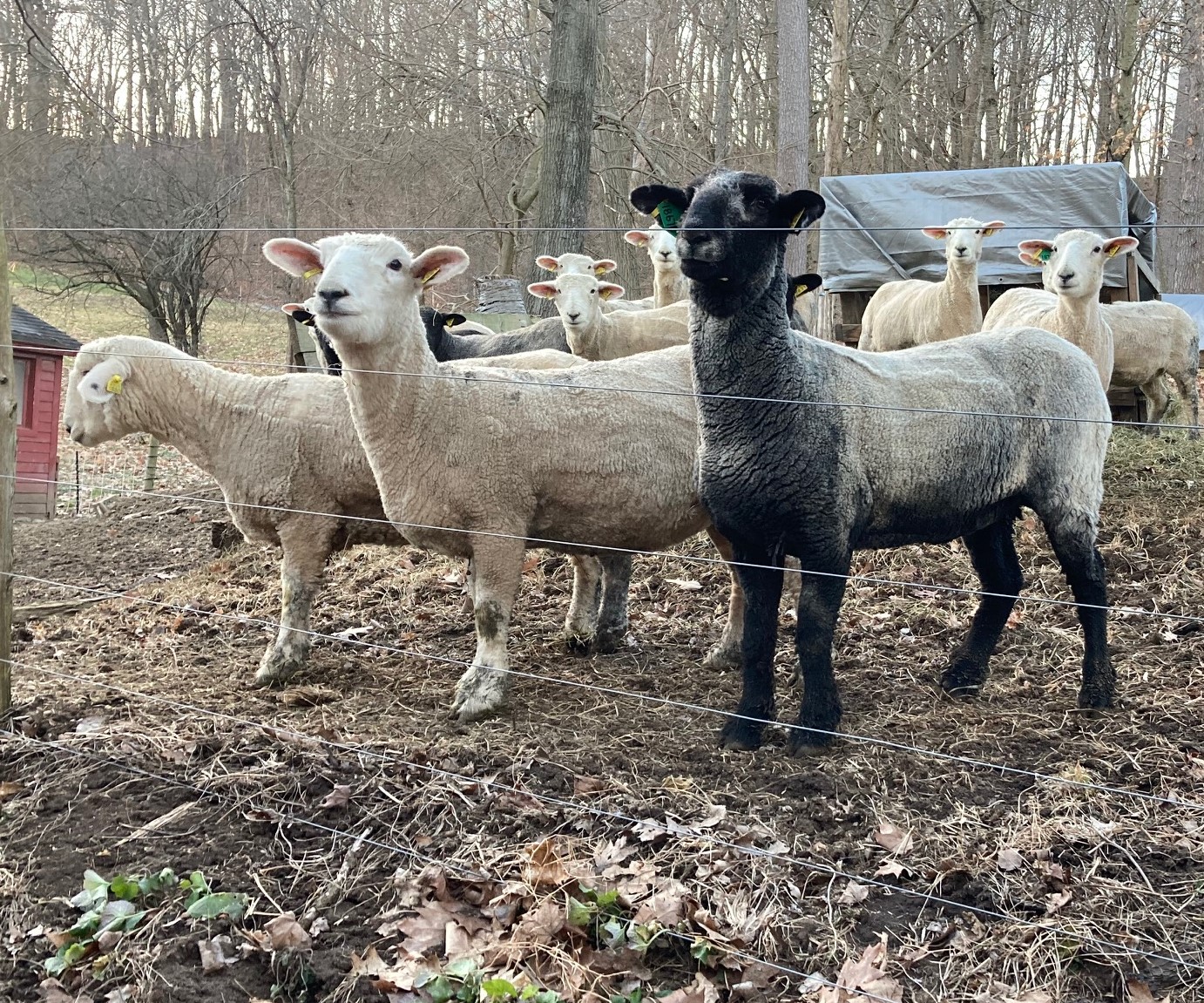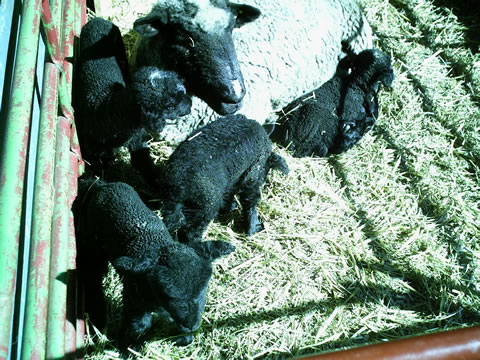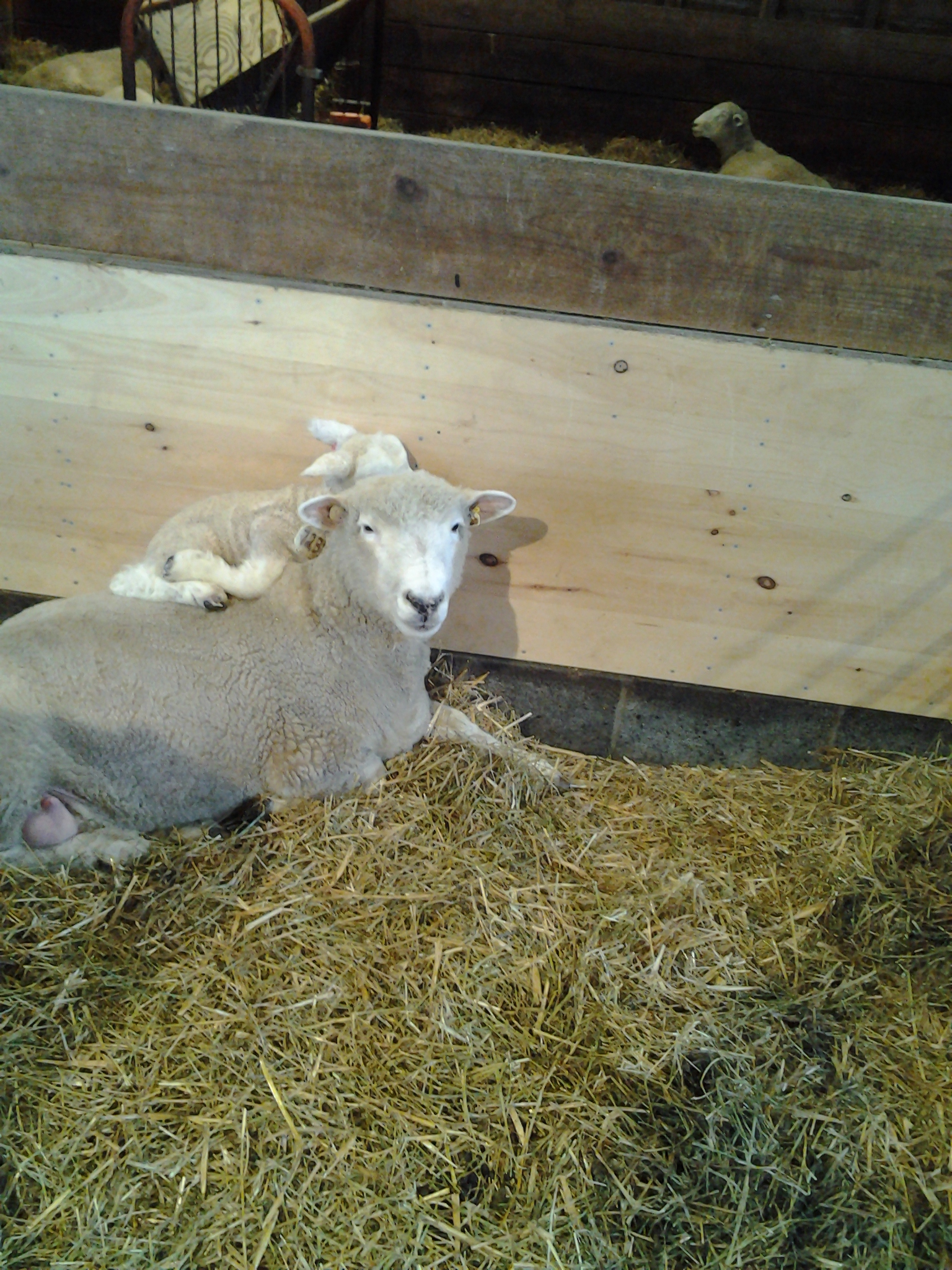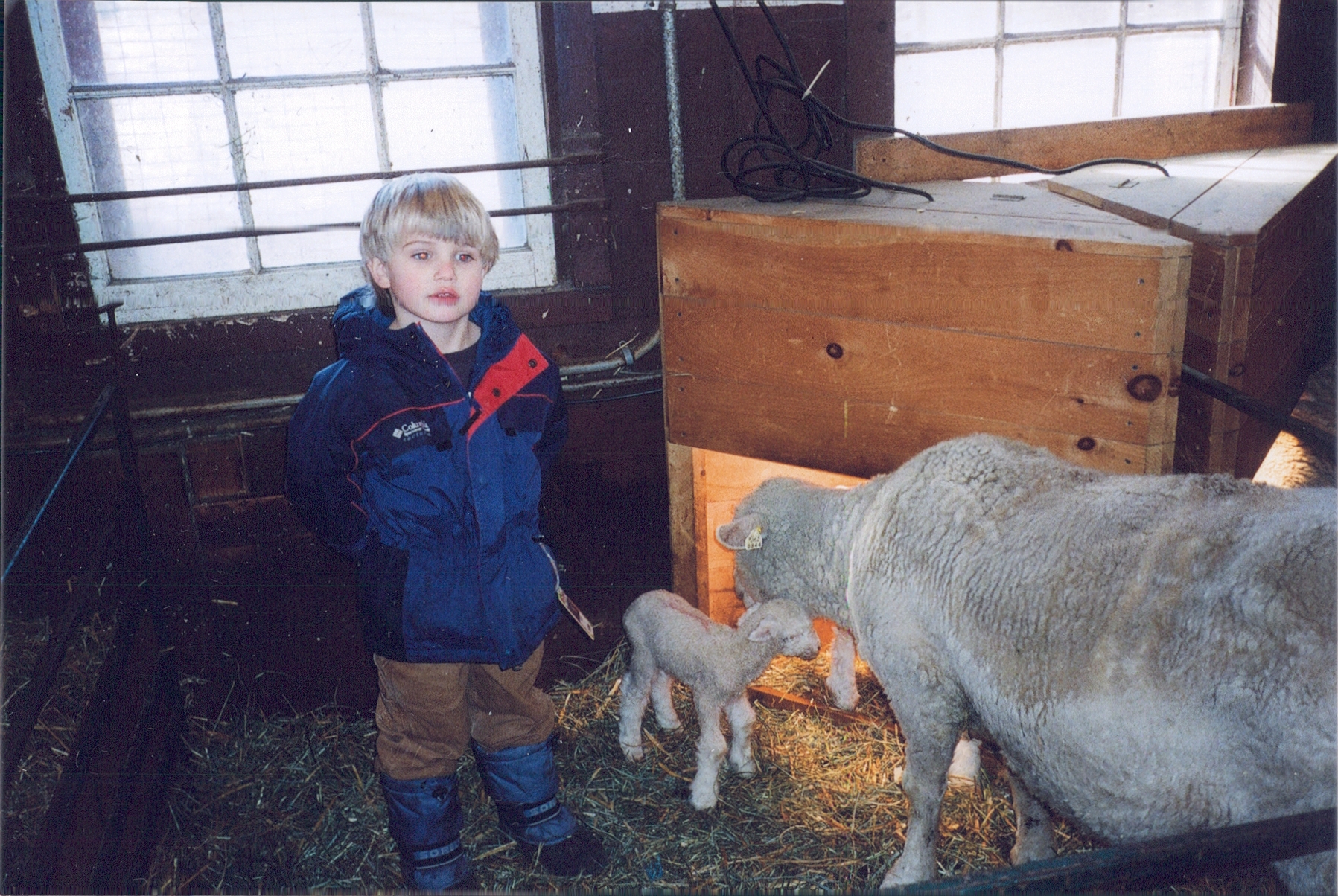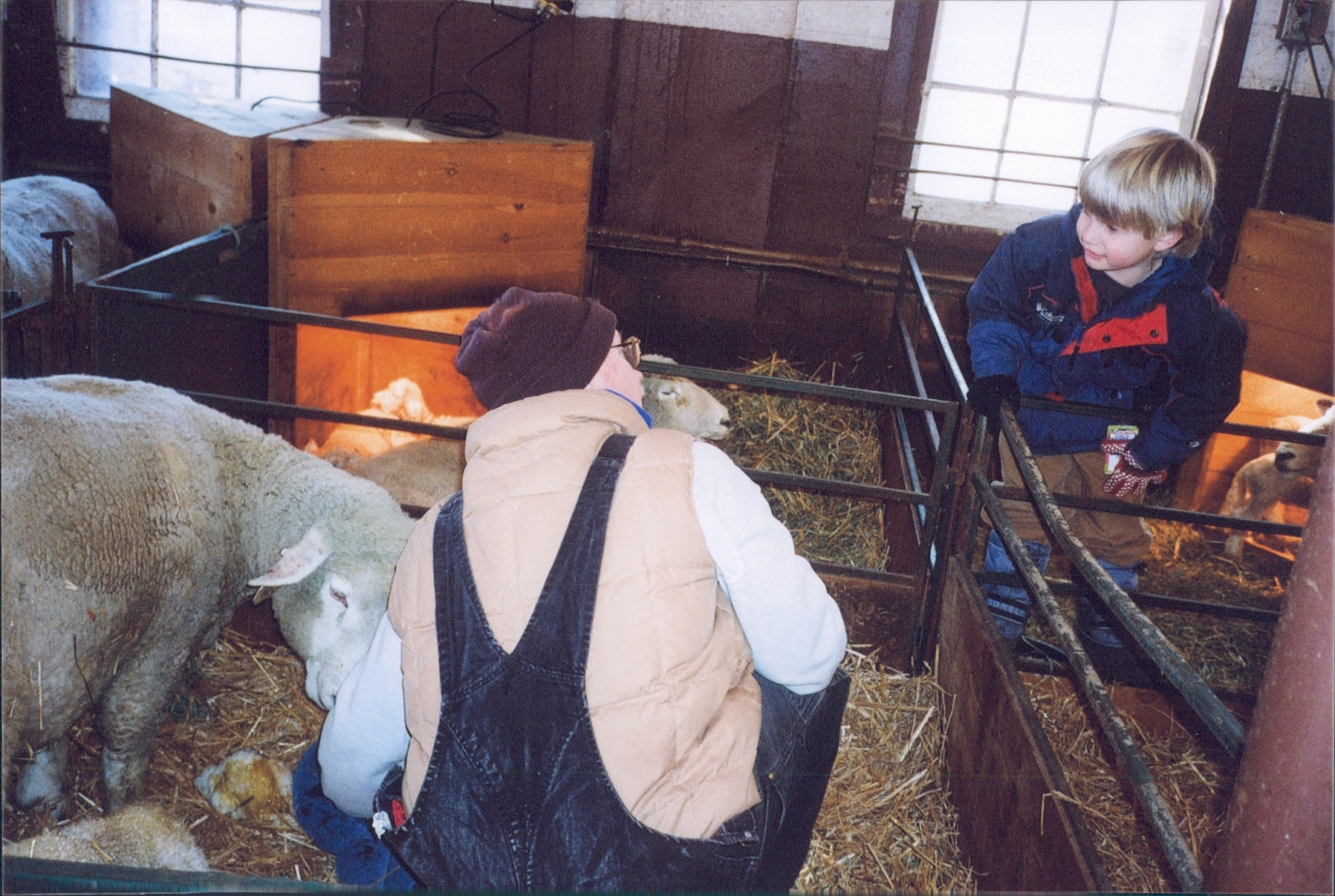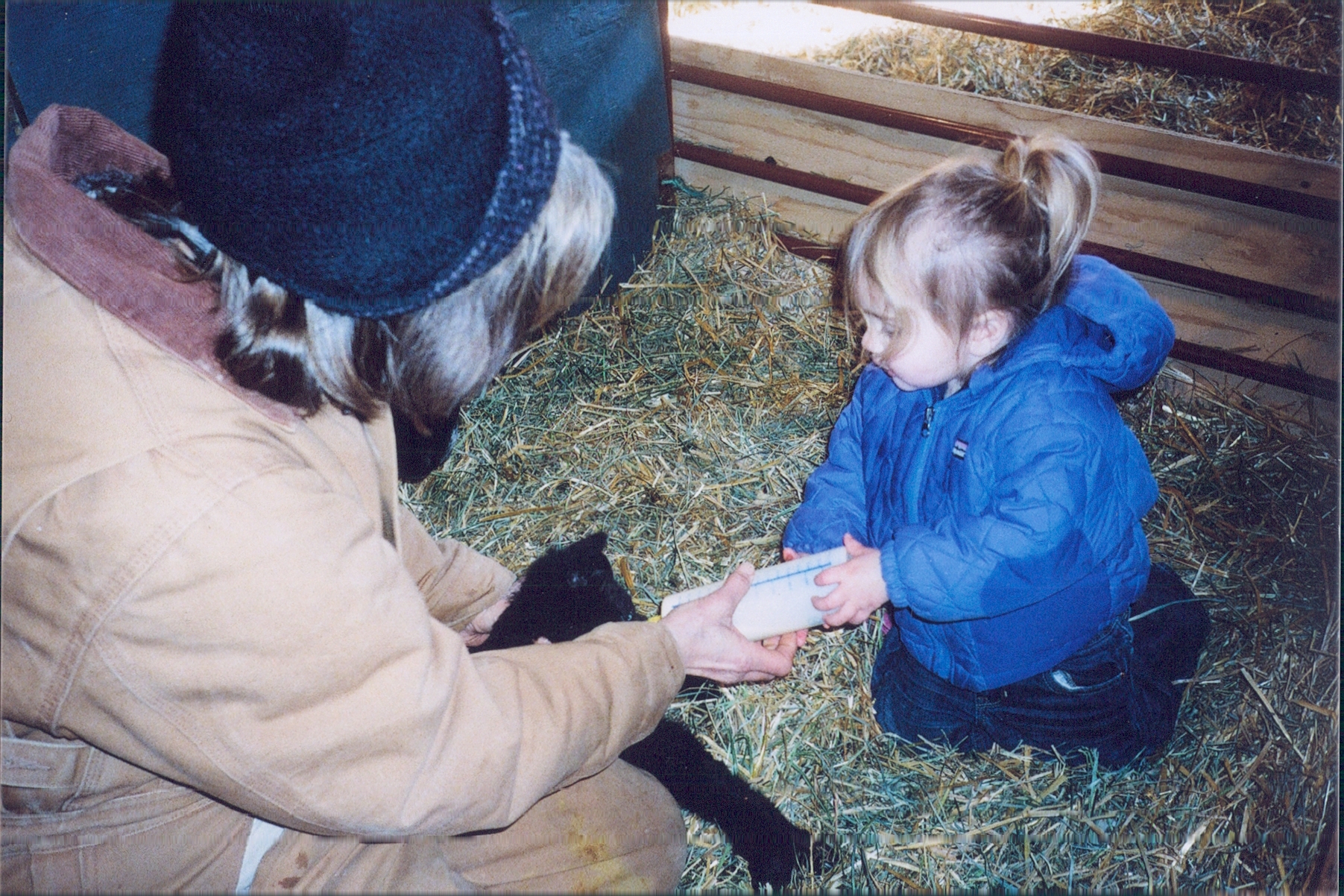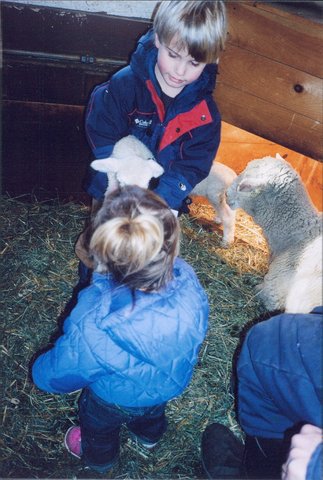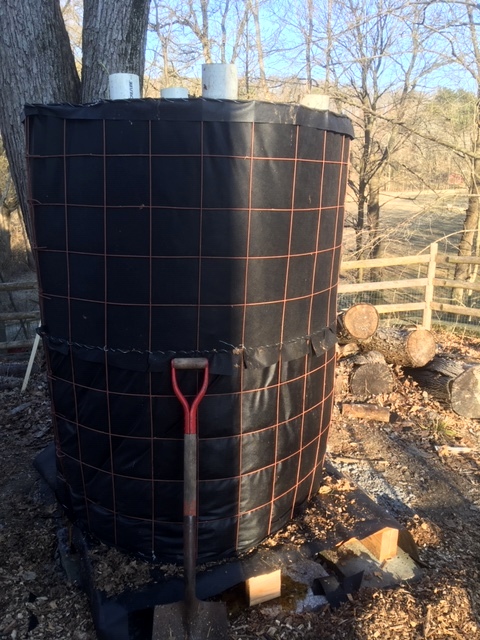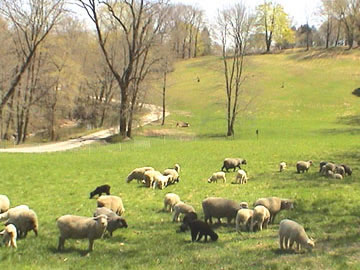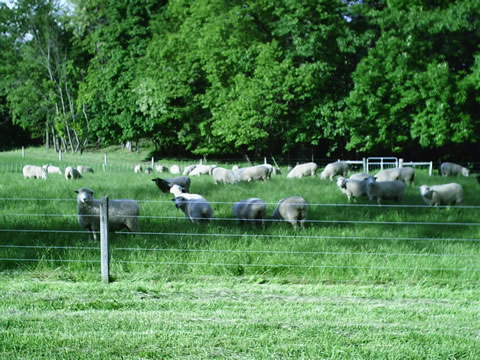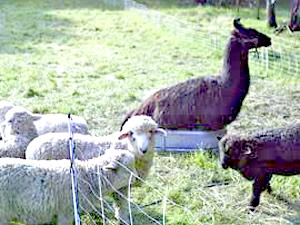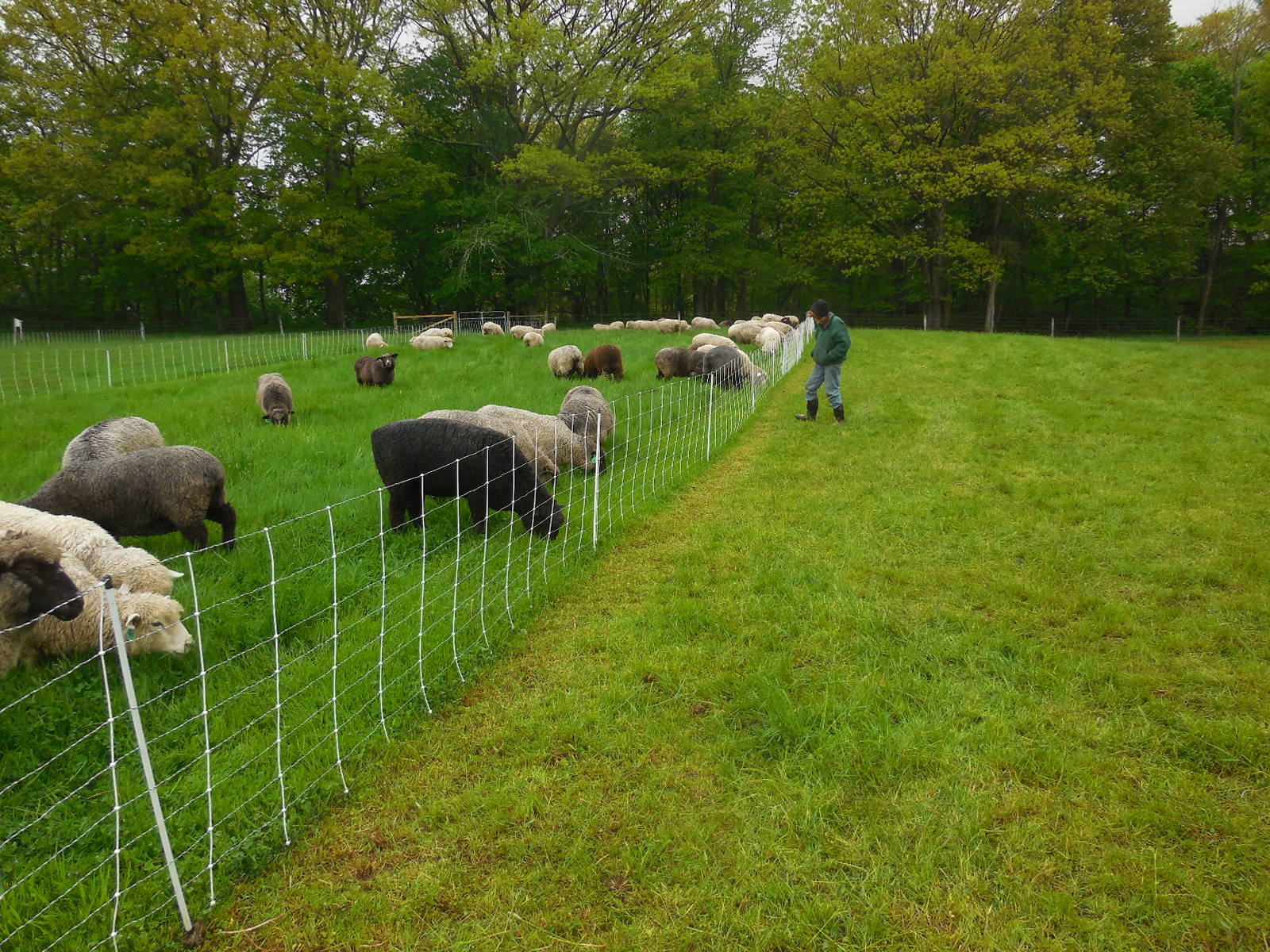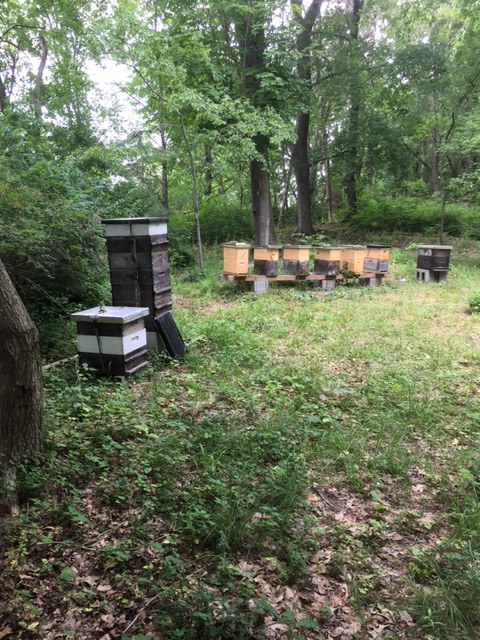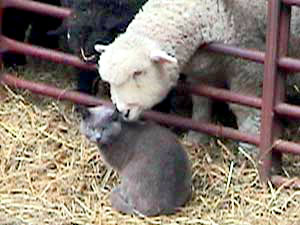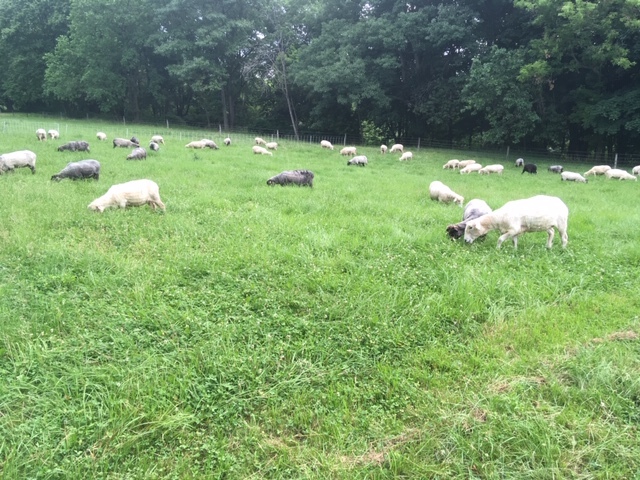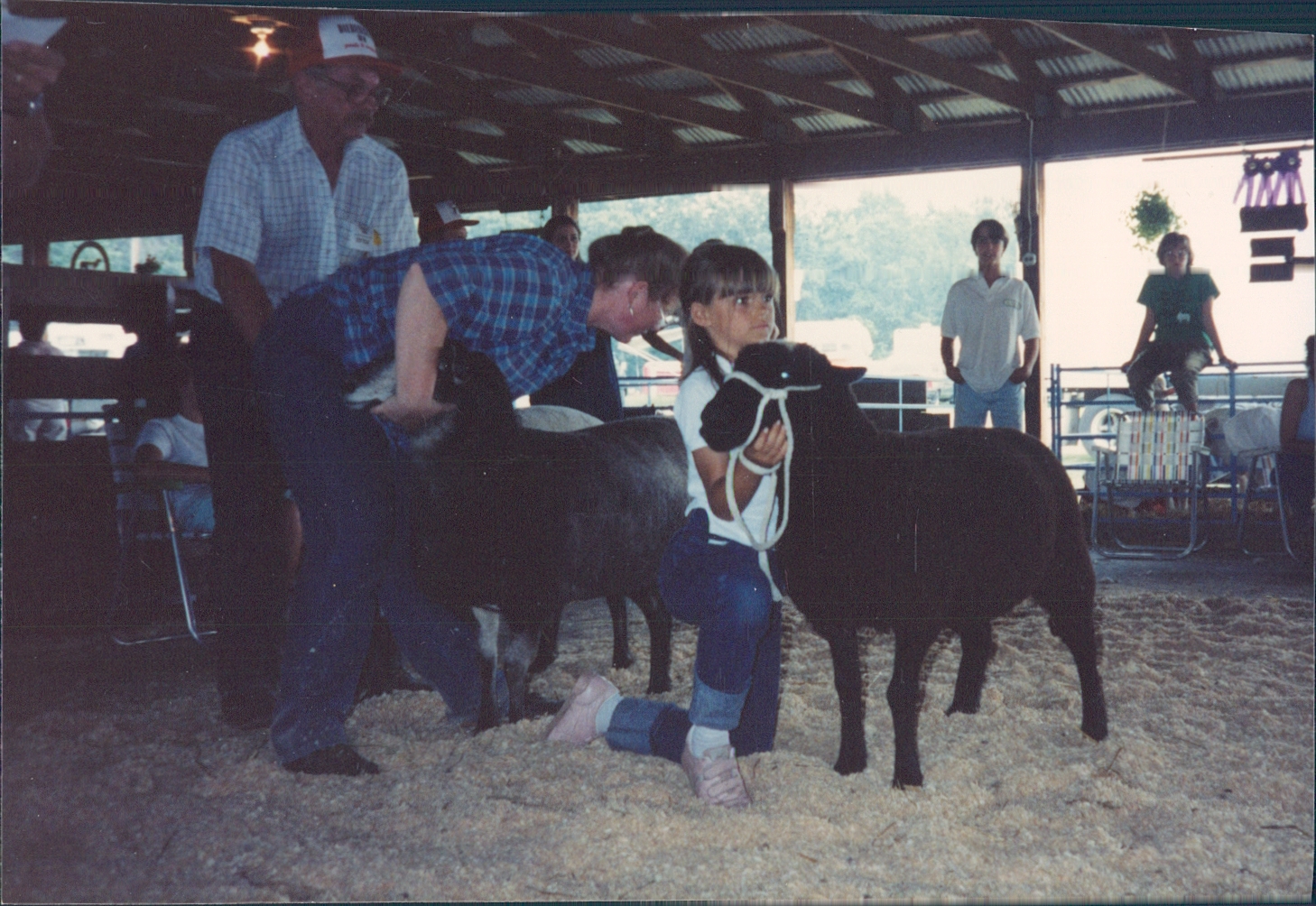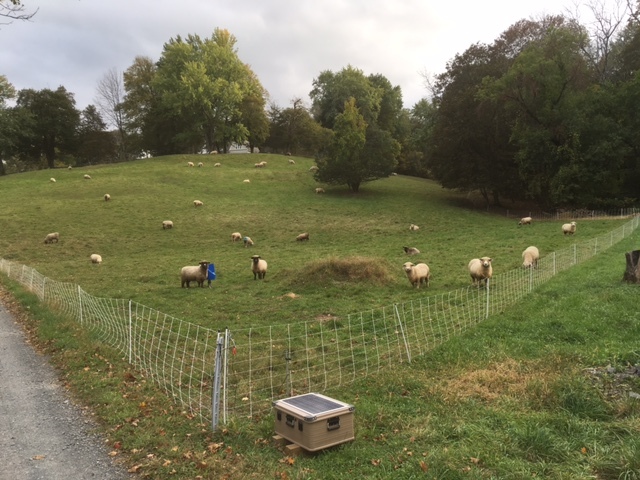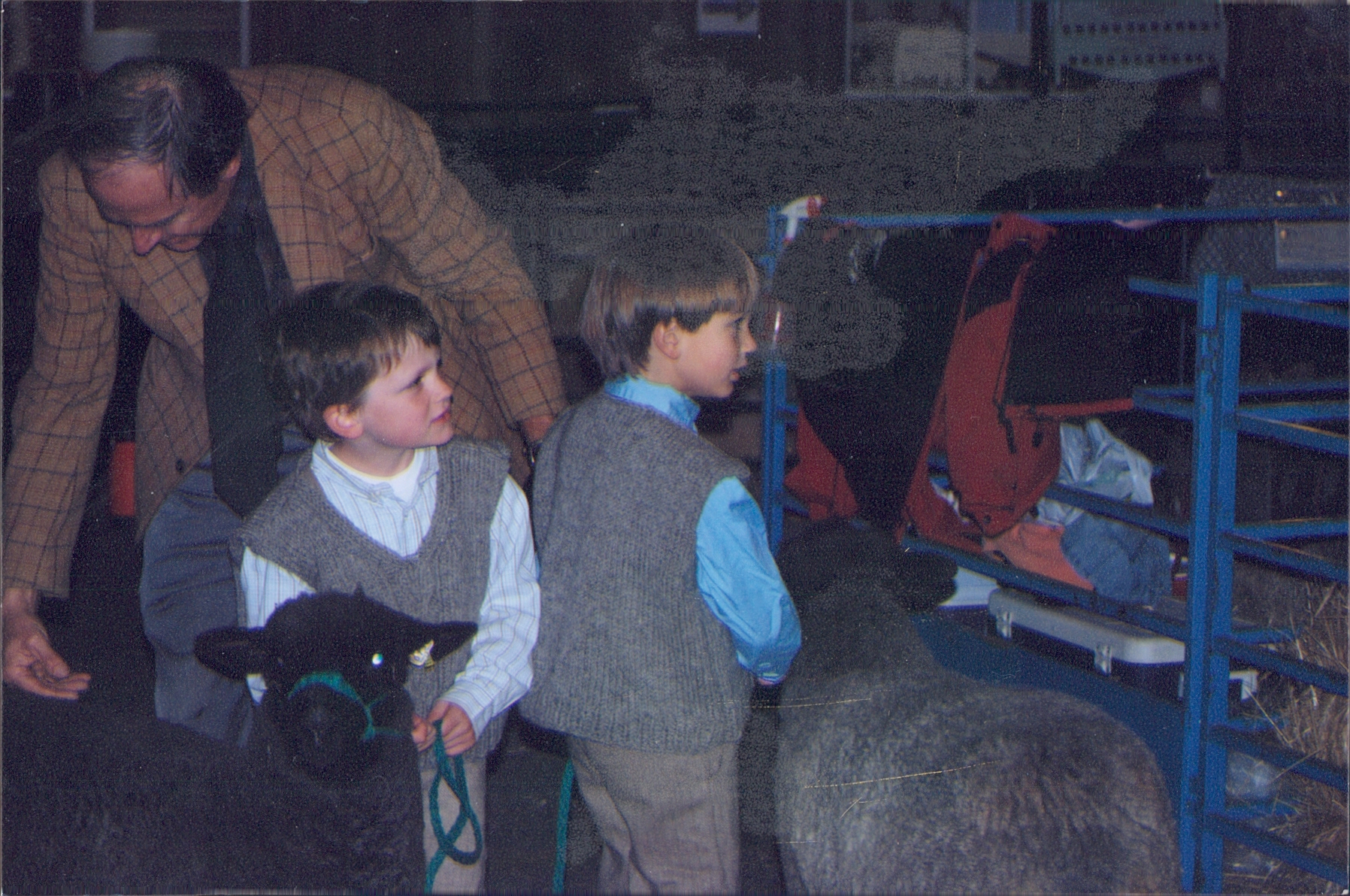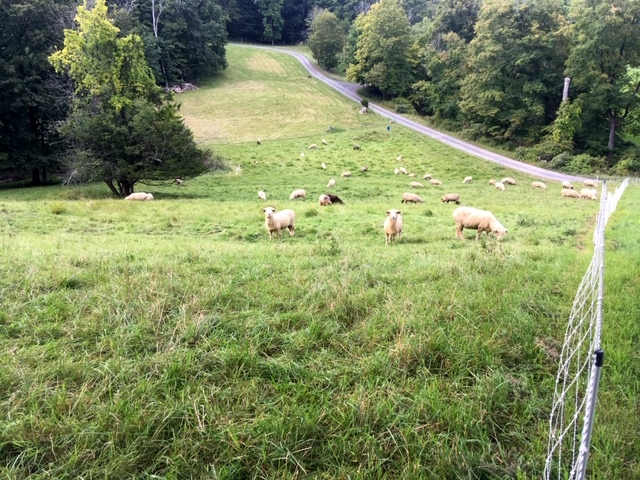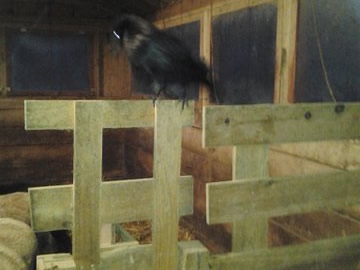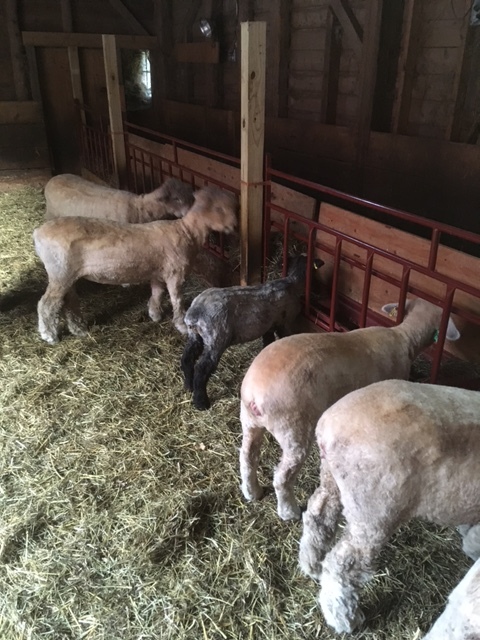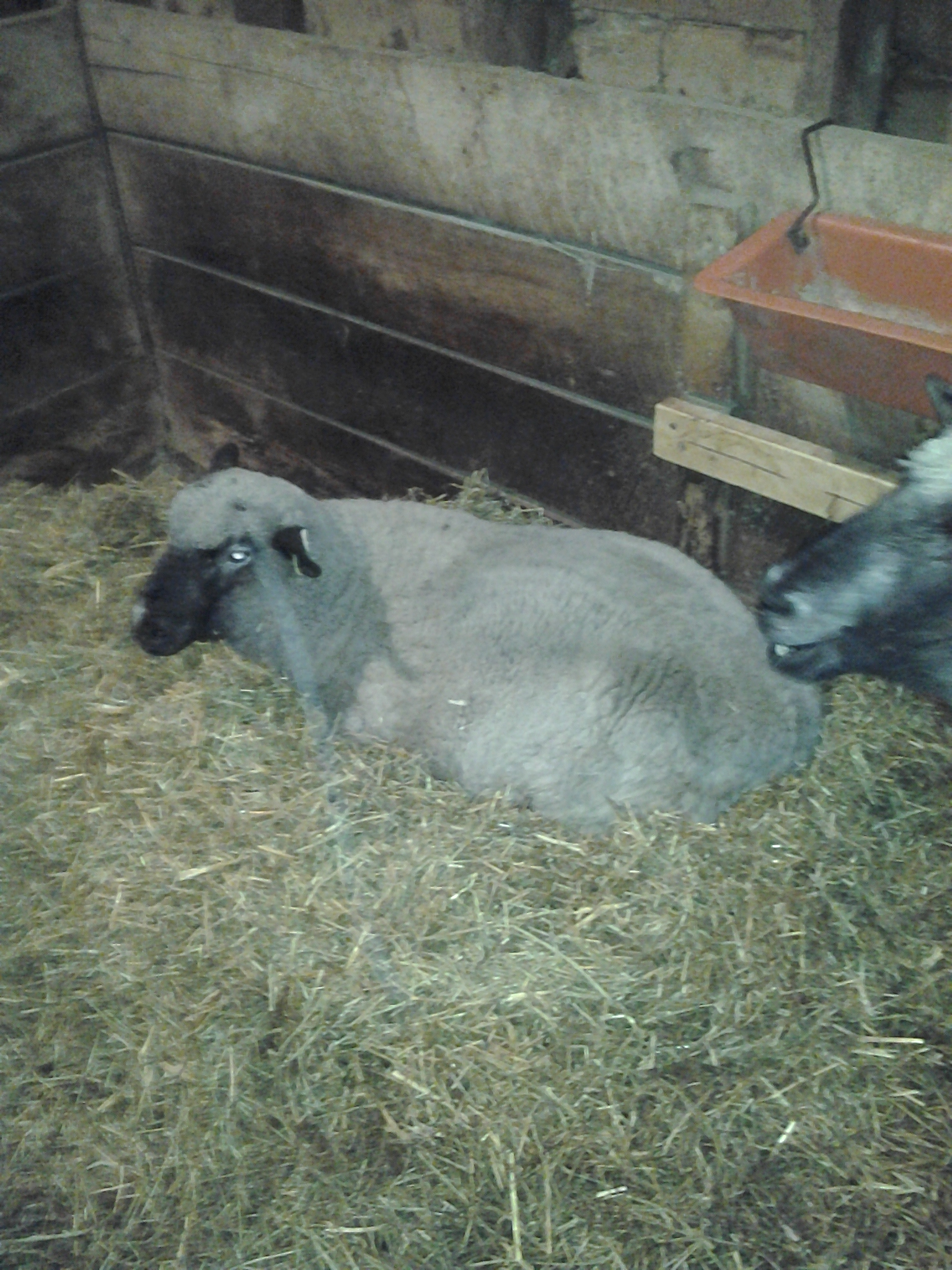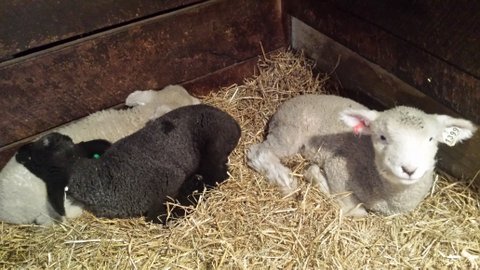photo “Corn Harvest” from pixabay,com
This is the fifth essay in a series on how American agriculture can thrive in a strenuous good-faith effort to halt global warming. The first four, earliest first:
2. Comparing-carbon-footprints-of-world-and-american-agriculture
3. Fossil-fuels-in-the-carbon-footprint-of-american-ag
4. Carbon-tax-and-american-agriculture
Abstract I used Life Cycle Assessments to reckon the total annual emissions of carbon dioxide, methane and nitrous oxide ascribed to the production in America of seventeen food staples singly and in aggregate (711 million metric tons CO2-e/year). The findings fit with two earlier reports that beef production predominates. Meat production in this analysis accounts for slightly more than half of agricultural greenhouse gas (GHG) releases. In my opinion, lowering the net carbon footprint of beef per functional unit by moving to holistic management grazing that sequesters carbon in soil is a better way to improve GHG flux than drastically reducing the national beef herd. Carbon sequestration removes CO2 from the atmosphere while restoring the element to soils deprived of it, making them more resilient to weather volatility and less dependent on fertilizers made from fossil fuels. These improvements will make living and working more secure for farmers and ranchers, for everyone who depends on food grown from the soil; that’s about all of us.
“Carbon footprint” of American agriculture can mean the total yearly estimated emissions of CO2, methane and nitrous oxide ascribed to American agriculture regardless of where in the sector the releases occurred. Another approach, in this essay, sums the GHG releases linked to the production of major food types, called in slang “carbon foodprints.”
I used Life Cycle Assessments (LCA) from the literature to find the “carbon foodprint” for a number of American nutritional staples. Knowing these along with the annual consumption of each staple can guide American agriculture to lower our carbon footprint without giving up our mission to steward soil and water for future generations, feed a growing population well and have our enterprise thrive. [Read more about LCA in Appendix 1 with the <click to continue> prompt at the end.]
Most people see a carbon tax as hitting agriculture through fossil fuels only. This overlooks the greenhouse gas (GHG) profile of the sector; nitrous oxide and methane vastly outweigh carbon dioxide from fossil fuels. LCA accounts for all three to estimate the carbon “foodprint” of various comestibles. Summing those estimates over all major food types gives a composite portrait of GHG emissions more informative than a breakdown by gas and source of gas such as graph 3.2 in the previous essay.
Abbreviations used in text
CF carbon footprint; also “foodprint” [the CF of a particular foodstuff]
CO2 carbon dioxide
CO2-e carbon dioxide equivalent, discussed in the first essay
CSSS carbon sequestration and storage in soil
FU Functional Unit (see under Methods)
GHG Greenhouse gas (limited here to CO2, methane, nitrous oxide)
LCA Life cycle analysis
M mt Million metric tons = million tonnes
Methods For brevity the customary methods section is in appendix 2. Follow the <click to continue> prompt at the end of the text.
Findings Graph 5.1 shows for seventeen foods the annual GHG emissions ascribed by LCA to production, the cumulative carbon foodprint. in blue alongside tonnage of that food produced in a recent year (red). The aggregate foodprint of all seventeen is 711 M mt/yr. The data on which the graph is based are in Table 5.1 in Appendix 3. Follow the <click to continue> prompt at the end of the text.
Graph 5.1 See text for explanation.
The pie chart below, also based on data in Table 5.1, includes the twelve of the seventeen commodities that combined account for 99% of GHG emissions attributed to all seventeen jointly. The legend cannot fit the names of all the commodities. Beef accounts for 36% of the total, pork and corn for 10% each and chicken for 9%. Note well, however: that these proportions are not of all GHGs from US agriculture; but of a subgroup that to my reckoning includes most, not all, of the grand total of foods from crop and livestock agriculture.
Graph 5.2 (pie chart) share of the total annual GHG emissions pooled from twelve foodstuffs attributed to each one. The legend does fit all. The missing two, ice cream and eggs, can be found in Table 5.1 in Appendix 3.
Graph 5.3 displays the “carbon foodprints” for each of the nine foods that have by my estimate a “carbon foodprint” per functional unit of >2 kg CO2-e/kg kitchen-ready (edible) food. These nine foods combined account for 72 % of the total GHGs (711 M mt/yr) attributed by my estimates to the seventeen foods combined. Note that butter, cheese, ice cream and fluid milk can be thought of in the super-category of “dairy.” Beef has the highest carbon foodprint, with lamb a close second. Because so little lamb is grown in the USA, the contribution of this small ruminant to agricultural GHG emissions is negligible.
Graph 5. 3 “Carbon foodprint” for each of nine foods that have by my calculations a CF /FU greater than 2 kg CO2-e/kg edible.
Preliminary sensitivity analysis [see Appendix 4 if you wish. The analysis deals mostly with beef.]
Comparison to other reports that spanned many different foods Starting off, I knew of two earlier reports but did not consult them, wanting a do-it-yourself, if naïve, start. A paper by Eshel, Shepon et al must be the gold standard. The popularized Meat Eater’s Guide from the Environmental Working Group (EWG) seems sound to me. Caveats about comparing my findings to those of the other two papers are in Appendix 5.
All three viewpoints agreed that beef has a much higher carbon foodprint per functional unit than other foods popular in the United States; that chicken and pork are roughly equivalent to each other in “carbon foodprint;” and that potato is at least ten times lighter on carbon foodprint than beef.
|
|
|
|
|
|
|
|
|
|
|
|
To make comparisons easier, table 5.4 below gives the “carbon foodprint” for each of four foods as the ratio of that particular “foodprint” to that of chicken/poultry in the review cited. In all three reviews, beef has a carbon footprint (CF) at least 3.5 times that of chicken and two to three times that of pork. Potatoes are much less intensive than chicken.
|
|
EWG |
Eshel et al/ |
this report |
|
|
kg |
kg |
kg |
|
Beef |
3.5 |
7.3 |
5 |
|
Pork |
1.7 |
1.3 |
1 |
|
Chick/poult |
1 |
1 |
1 |
|
Potatoes |
0.2 |
0.6 |
0.2 |
|
Eggs |
0.7 |
0.9 |
0.3 |
Table 5.4 Ratio of “carbon foodprint” (as kg CO2-e/kg food in kitchen) for specified food compared to “foodprint” for chicken in three reviews — Environmental Working Group, Eshel et al (PNAS) and this report.
Conclusions Sharply reducing the consumption of beef raised in this country or imported would greatly lower the carbon footprint of American agriculture, even if beef were substituted for entirely by poultry and pork. It does not follow, however, that cutting beef consumption by (say) 60% is the best way to change that footprint. Redirection of beef production through holistic planned management from grain-fed to grass-based with carbon sequestration and storage in soil (CSSS) could be a practical alternative good for (incomplete list in in alphabetical order) air, animals, consumers, Planet Earth, producers, soil, and water.
In the previous essay “Carbon Tax and Agriculture” I outlined two different routes that American farming and ranching could take to reduce our carbon footprint. i.e. the annual GHG emissions of the whole sector. In the context of the current essay, these can be elaborated,
1. Become more efficient with carbon, produce the same quantity and quality of food at little or no price increase and with savings to producers Hark back to Graph 5.1, seventeen foods with an aggregate footprint of 711 M mt CO2-e/yr. Increased efficiency means that each food type in this scenario has a lower carbon foodprint per functional unit. Suppose (this is unrealistic) each is decreased by 20%. The combined footprint would be 569 M mt CO2-e/yr with no change in the tonnage of food produced. The nutritional quality might be changed. The same tonnage could be produced for an aggregate footprint of 570 if the foodprint of beef were lowered to 6 kg CO2-e/kg LW from 13.6 Is such a reduction possible in the setting of regenerative agriculture? It might be; we need an expert opinion.
2. Decrease carbon usage without bettering carbon footprint per functional unit, thereby lowering production and possibly raising prices. In this model, the carbon footprint of each food is unchanged but the tonnage of each drops by 20%. The output may not meet the needs of the population. If beef production were cut by 56% from 18,45 M mt/yr to 8.1, with that meat’s carbon foodprint steady at 13.6 kg CO2-e/lg live weight, the composite footprint of the seventeen foods would be 570 M mt CO2-e. I don’t recommend that path; others do.
There’s much more to say on carbon sequestration and storage in soil. Soil is not just a handy place, like an odor-absorbing sponge, to lock away something unwanted. In ten or twelve thousand years the world’s soils have been seriously degraded by loss (from agricultural methods such as slash and burn, deep tillage, synthetic nitrogen fertilizers and improper grazing) of perhaps half their organic carbon content. Air and water have had some due attention from some administrations in the USA. Soil, our third great natural resource, has received far too little. On a list of the world’s top ten natural resources posted by Conserve Energy Future, for example, it is in the 9th position. We might think of our country’s soil in 2018 as where air and water were in the 1960s, in desperate need. Restoring carbon to that depleted resource is a positive action for our country’s infrastructure and our food future. When restoring soil goes hand in hand with fighting global warming, we should be running, not walking to do it.
to go to Appendices and References click here
Appendix 1. Notes on life cycle assessment.
- “Boundaries” may differ. LCA are theoretically “cradle to grave,” incorporating all possible environmental effects right through post- consumer table scraps, even dish-washing. Some analyses, especially of livestock and dairy, may be cradle to farm gate only or processing plant entry gate to point of sale, to give two examples.
- Functional units vary (see definition under Methods)
- Locations vary across climatic regions and continents
- Feeding practices vary e.g. all grass after weaning vs. feedlot. While studies distinguish them, it is hard to decide which practice is most generalizable where a generalization is called for.
- Assumptions unique to a given study can be hard to tease out. In one example, the carbon footprint of chicken was three times higher in a study that considered manure just as waste than in a study that also valued it as fertilizer.
Appendix 2. Methods
For each of twenty-two foods (mostly staples in the USA except lamb) I found at least one LCA in a peer-reviewed publication that estimated what I call the “carbon foodprint” as kg CO2 equivalent/kg functional unit (FU) / year. FU for livestock can be live weight; or carcass weight, or “packaged meat,” or kilocalories, or grams of protein or btus consumed. For many non-livestock commodities the FU is 1 kg of the produce itself (e.g. dried soybeans at 12% moisture content or cheese as sold at 38% moisture content). When comparing the estimate for carbon foodprint per FU across livestock studies that used different FUs (e.g. live weight (LW) not carcass weight (CW)), I converted all into LW using figures for yield from Stone Barns (shown below) and for beef from Univ of TN then then adjusted the numerator of “carbon foodprint” accordingly. In a made-up example, “carbon foodprint” for beef is 22 kg CO2-e/kg carcass weight. CW averages 62% of LW. The “carbon foodprint” /kg LW is therefore approximately 22 * .62 = 13.6 kg CO2-e/kg LW/year. I then transformed kg CO2-e/ kg LW into kg CO2-e/ kg kitchen-ready meat by dividing the former quantity (LW) by the final yield percentage. For example, if “carbon foodprint” for beef is 13.6 kg CO2-e/kg LW/year, the carbon foodprint per kg edible on the kitchen table is (13.6/0.43 =) 31.6 kg CO2-w/kg oven-ready meat. According to FAO this means bone-in.
- Dressing wt as % of LW Final yield of primal cuts as % of LW
- Beef 62 43
- Pork 74 52
- Lamb 50 35
- Goat 48 34
- Chicken 70 40
- Turkey 77 45
The table below summarizes the key findings. For my pork “carbon foodprint” estimate I transformed that given by Thoma, Nutter et al. They cite 2.44 lbs CO2-e/ 4 oz of pig meat consumed which = 1.1 kg CO2-e/ 0.11 kg consumed = 10 kg CO2-e/kg consumed. To convert this to kg live weight I multiplied 10 kg CO2-e by 0.52, the yield of edible meat from hogs in the table above.
Recent-year figures from the USDA and various trade groups were used to reckon the total mass in tonnes of livestock LW or of dairy products processed or caused to commercially disappear per year. Similar sources were found for mass of non-livestock foods produced/year in USA. Most of these sources are in the references though the text does not always key into them.
Column C in table 5.1 represents the estimated live weight of specified livestock produced in the USA in a recent year. For produce not animal meat, the mass is recorded production in M metric tons.
Column D displays the “carbon foodprint” as kg CO2 per kg of LW or kg of produce
Column B (col C multiplied by col D) shows M mt of CO2-e attributable to the tonnage of the commodity produced in the US/yr. For example, chicken has here a “carbon foodprint” of 2.56 kg CO2-e per kg live weight.. Live weight of chicken slaughtered/yr (2013) was ~ 24.1 M mt. 2.56 kg CO2-e/kg LW * 24.1 * 10^9 kg LW returns 62 * 10^9 kg = 62 M mt/yr
Lamb and orange juice had the lowest tonnage produced in the USA of the seventeen foods on Table 1. Cotton was originally included, being an important ag commodity then removed as not edible (except for seed oil). Everything on the list except cheese, butter and ice cream may be called a crop. Fluid milk retailed is only a quarter of raw milk production. Cheese takes about half.
The estimated GHG emissions from producing the seventeen commodities in Table 1 total 711 million metric tonnes (M mt) /yr. This is above the range of EPA estimates for “agriculture” cited as about 9% (593 M mt) of a national total of 6,587 M mt for 2015 and (with forestry) as 9.1% (625 M mt) of 6,871 M mt nationally in 2014. Bear in mind, however, that emissions ascribed to “agriculture” in most profiles by EPA and other agencies do not include those from fossil fuels burned by farm machinery nor by farmer-owned vehicles doing farm business on the highway nor the energy cost of manufacturing synthetic nitrogen fertilizers. See essay 3 in this series. These sources of GHG emissions are, however, typically entered into many of the life cycle assessments of food that I reviewed, though not all. In my opinion, 711 M mt/yr corresponds reasonably to the EPA estimates done by a different method based on livestock censuses and crop production data.
If several score more foods and inedible fibers (mohair, wool, corn stover) were rated on carbon footprint multiplied by annual tonnage produced then added to the list, the total estimated emissions would be well over 700 M mt/yr. I think, however, that Table 5.1 includes the most important contributors except for turkey, which I arbitrarily omitted along with farmed fish. Alcoholic beverages, a not insignificant source of calories, were also left out.
Appendix 3. Results in table form
|
A |
B |
C |
D |
|
E |
|
Commodity |
M mt CO2-e |
M mt prod/yr |
CF |
|
Ref for |
|
|
attrib/yr |
|
kg CO2-e |
|
CF |
|
|
|
|
/kg LW |
|
|
|
Beef |
251 |
18.45 |
13.6 |
|
Beauchemin |
|
Pork |
74 |
14.3 |
5.2 |
|
Thoma, Nutter |
|
Chicken |
62 |
24.1 |
2.56 |
|
Williams et al 2006 |
|
Lamb |
0.5 |
0.06 |
8.6 |
|
Ledgard NZ |
|
Corn |
73 |
382 |
0.19 |
|
wcros |
|
Soybeans |
49 |
117 |
0.42 |
|
united soybean |
|
Wheat |
40 |
62.7 |
0.63 |
|
Wouter |
|
Potatoes |
31 |
19.8 |
1.5 |
|
Blonk |
|
Rice |
6.5 |
4.44 |
1.47 |
|
Brodt |
|
Tomatoes |
1.47 |
1.47 |
1 |
|
Blonk |
|
Fluid milk |
51 |
25 |
2.05 |
|
Thoma et al |
|
Cheese |
41 |
4.95 |
8.3 |
|
Kim, Thoma |
|
Butter |
7.7 |
0.86 |
9 |
|
Nilsson |
|
Ice cream |
12.7 |
1.59 |
8 |
|
Ben and Jerry’s |
|
Orange juice |
0.3 |
0.383 |
0.8 |
|
Spreen et al |
|
Apples |
0.3 |
4.2 |
0.07 |
|
Gooseens |
|
Eggs |
10.4 |
5 |
2.08 |
|
Pelletier 2017 |
|
Total |
711.87 |
|
|
|
|
Table 5.1 Statistics relating to greenhouse gas releases for seventeen important agricultural commodities in USA. Bottom line of column B is total for all 17. Sources and methods of handling are discussed in another section. Note: Some figures are rounded off, some given to two or three decimal places. Decimal places do not imply precision or accuracy. They are left in to help back-check arithmetic and sources. The term LW applies only to meat. CF = carbon footprint of a food
The yearly volume of GHG attributed to each food (col B) depends on its “carbon foodprint” per functional unit (FU) and the mass of FUs produced/consumed per year. Through arithmetic manipulations discussed above I strove to make the FU for all foods the same, viz. one kg of that food in a kitchen ready to be eaten after due preparation or actually eaten. This is not exact, as both the studies I looked at for validation counted every food unit as eaten with the waste disposed of.
Appendix 4. Sensitivity analysis
There are a myriad of possible errors or second-guessable inputs in Table 5.1. Most of the seventeen foods in this table have a wide range of values in the literature for “carbon foodprint.” The high-end figures are frequently at least twice the low-end ones. Beef, the behemoth “carbon foodprint” in America, does not have quite such a broad range once outliers are set aside. Because of the great mass of edible beef produced in the USA yearly and the high “carbon foodprint” of beef per FU compared to other foods, however, beef production has an outsize influence on the seventeen-foods-combined GHG total. Refer to column B of Table 5.1. Whatever “carbon foodprint” is used for beef can thus skew the total.
An article by Desjardins et al was very helpful in compiling reports and reconciling different functional units by converting all those used into live weight at the farm gate. I made the following Table 5.2 from there. In column F is my estimate for live weight of beef cattle going to slaughter in 2015 using data from beefusa. LW * in column C indicates that Desjardins et al converted the original functional unit in to kg live weight. I have not been able to see all the original papers yet. I think all of these studies were bounded at the farm gate, thus overlook facets of beef marketing and consumption after that point. These post-farm phases, however, have been found for meat livestock to contribute relatively little to the big picture, as opposed to dairy products or frozen French fries for which post farm gate processing is relatively energy intensive.
|
|
B |
C |
D |
E |
F |
G |
|
|||||
|
source |
region |
FU in kg |
CF/FU |
CF per |
LW |
GHG |
|
|||||
|
|
|
|
|
kg LW |
M mt |
M Mt |
|
|||||
|
Pelletier et al 2010 |
MWUSA |
kg LW |
16.2 |
16.2 |
18.45 |
299 |
|
|||||
|
Ledgard et al |
NZ |
kg LW |
12 |
12 |
18.45 |
221 |
|
|||||
|
Beauchemin et al |
Canada |
kg carcass |
22 |
13.6 |
18.45 |
251 |
|
|||||
|
Johnson and Phetteplace |
USA |
kg carcass |
22 |
13.6 |
18.45 |
251 |
|
|||||
|
Stackhouse-Lawton et al |
USA |
.45 kg boned |
23.6 |
11 |
18.45 |
203 |
|
|||||
|
Leip |
Europe |
LW* |
13.3 |
13.3 |
18.45 |
245 |
|
|||||
|
Casey |
Ireland |
LW* |
13 |
13 |
18.45 |
240 |
|
|||||
|
Cederberg |
Sweden |
LW* |
11.6 |
11.6 |
18.45 |
274 |
|
|||||
|
Veysser et al |
Charolais |
LW* |
14.6 |
14.6 |
18.45 |
269 |
|
|||||
|
|
|
|
|
|
|
|
||||||
|
|
||||||||||||
|
|
|
|
|
|
|
|
|
|
|
|
|
|
Table 5.2 Representative values for estimated “carbon foodprint” of beef in nine studies
When the functional unit is transformed for all the above studies into kg LW, the value of the “carbon foodprint” per kg LW beef does not have a tremendous range (11 – 16.2). There are many more reports one could choose an input from. I left out one study from Japan of Kobe beef that had a very high value and another from East Anglia that was below 10 kg CO2-e/kg LW when converted to LW. My first run used the 16.2 figure from Pelletier et al 2010 for backgrounding then feedlot. This fell between a higher figure in the same report (for pasture) and a lower (for feedlot). This choice returned an estimate for total GHG emissions from sixteen foods higher by 96 M mt/yr than would the use of the lowest in column E of the table (Stackhouse-Lawton et al) Though Pelletier et al have a fine reputation in LCA, I decided to use a figure from the middle of the range (Beauchemin et al) . This was not because I as a non-expert judged the one more valid than the other, but in order to avoid extremes.
For a similar reason, scanning a number of LCAs on chicken I stayed away from the highest CF figures (e.g. McLeod et al, converted by me to 3.6 kg CO2-e/kg LW) and the lowest ( 1.64 from Pelletier et al 2008 Agricultural Systems vol 98:67-73) settling on a mid-range 2.56 (Williams, Audsley et al in a DEFRA Report ISO205 that I have not been able to see but which is repeatedly cited).
Which “carbon foodprint” figure to use when there are a dozen credible ones is a perplex. I can’t do Monte Carlo simulations so chose a middle of the road figure for each food from studies done by ISO (International Organization for Standards) methods, most published in peer-reviewed journals.
Appendix 5. Notes on comparison to two other reports.
It is impossible to precisely compare my findings with those of the other two earlier, more sophisticated , papers. For one thing, the categories are different. Eshel et al used “poultry” where EWG and my report looked at “chicken.” Eshel et al used “dairy” while EWG broke out cheese and 2% milk, and my report separated four categories of dairy including cheese and fluid milk but not including powder or yogurt. I drew on livestock assessments that mostly ended at the farm gate and are thus a little lower than those of the EWG, which included post-farm energy costs on every food. On vegetables and fluid milk my synthesis agreed well with that of EWG, though we were some distance apart on cheese and on eggs.
Table 5.3 below lays out selected findings from the three reports. The figures were eyeballed from the graphs in Eshel et al and in EWG. In the fourth column, I adjusted the carbon foodprint estimates for livestock in Eshel et al from the functional unit of per 1000 kcalories (1 megacalorie) consumed to the FU of 1000 grams (1 kg ) consumed, assuming that 1000 kcal of animal meat is 250 grams of 100% protein (not strictly correct, as there will be some fat), each gram providing 4 kcal. I assumed that 1000 kcal of potato is also 250 grams since protein and starch both yield 4 kcal/gm. I assumed that 1000 kcal of eggs is also 250 grams though it is probably less because of the higher fat content of eggs ( I don’t know if shells – about 13% of weight—are counted).. I don’t like transforming other peoples’ figures but justify it here to make the functional units the same for all three reports: 1 kg consumed. Most of the studies I drew on were not cradle to grave like the other two, but cradle to farm gate or to “to retail.” This slight discordance will have to be disregarded.
|
|
EWG |
Eshel et al |
Eshel et al adj |
This report |
|
|
kg |
1000 kcal |
kg |
kg |
|
Beef |
24 |
10 |
40 |
31.6 |
|
Lamb |
36 |
n/a |
|
25 |
|
Pork |
12 |
2 |
8 |
5.8 |
|
Chicken |
6.9 |
1.5 |
6 |
6.4 |
|
Cheese |
13.5 |
n/a |
|
8.3 |
|
Fluid milk |
1.9 |
n/a |
|
2.05 |
|
Potatoes |
2.9 |
0.9 |
3.6 |
1.5 |
|
Tomatoes |
1.1 |
n/a |
|
1 |
|
Eggs |
4.8 |
1.4 |
5.6 |
2.08 |
Table 5.3 “Carbon foodprint” for selected foods from three independent literature surveys — Environmental Working Group, Eshel et al (PNAS) and this report. The functional unit is columns 2, 4 and 5 is kg edible food; in column 3 it is 1000 kcal eaten. In the fourth column I adjust values in third column to make FU the same (i.e. kg) in all three studies. Method explained in text. Entry for “chicken” under Eshel et al is that for “poultry” in their paper.
References cited in the text or tables are below. I have not recently checked all the hyperlinks. If you have trouble, feel free to e-mail me through sqs1 at columbia.edu .
|
Beauchemin Karen A et al Life cycle assessment of greenhouse gas emissions from beef production in western Canada: A case study Agricultural Systems 103 (2010) 371–379 Beefusa http://www.beefusa.org/beefindustrystatistics.aspx Ben and Jerry’s http://www.benjerry.com/values/issues-we-care-about/climate-justice/life-cycle-analysis Blonk Consultants http://www.blonkconsultants.nl/wp-content/uploads/2016/06/Carbon-footprints-of-table-potatoes-and-chips-July-2011.pdf Brodt, Sonja et al 2014 http://linquistwp.plantsciences.ucdavis.edu/wp-content/uploads/2013/11/2014-Brodt-et-al-LCA-of-CA-rice.pdf Cooper, JM et al Life cycle analysis of greenhouse gas emissions from organic and conventional food production systems, with and without bio-energy options NJAS – Wageningen Journal of Life Sciences 58 (2011) 185– 192 Desjardins et al http://www.mdpi.com/2071-1050/4/12/3279/ht Eshel G et al Land, irrigation water, greenhouse gas, and reactive nitrogen burdens of meat, eggs, and dairy production in the United States Proc Nat. Acad Sciences vol. 111 no. 33 2014 ISO https://www.iso.org/about-us.html Kim D, Thoma, Nutter et al https://link.springer.com/article/10.1007%2Fs11367-013-0553-9 Cheese and whey Ledgard Stewart F et al Carbon footprinting of New Zealand lamb from the perspective of an exporting nation Animal Frontiers 2014 Ledgard SR et al 2011 Life cycle assessment – a tool for evaluating resource and environmental efficiency of agricultural products and systems from pasture to plate Proceedings of the New Zealand Society of Animal Production 2011. Vol 71: 139-148 MacLeod, M., Gerber, P., Mottet, A., Tempio, G., Falcucci, A., Opio, C., Vellinga, T., Henderson, B.& Steinfeld, H. 2013. Greenhouse gas emissions from pig and chicken supply chains – A global life cycle assessment. Food and Agriculture Organization of the United Nations (FAO), Rome http://www.fao.org/docrep/018/i3460e/i3460e.pdf Pelletier Nathan et al. Comparative life cycle environmental impacts of three beef production strategies in the Upper Midwestern United States Agricultural Systems 103 (2010) 380–389 Pelletier Agricultural Systems 98 (2008) 67–73 Stackhouse- Lawton et al http://digitalcommons.unl.edu/cgi/viewcontent.cgi?article=1443&context=hruskareports Thoma, Nutter et al http://porkcdn.s3.amazonaws.com/sites/all/files/documents/NPB%20Scan%20Final%20-%20May%202011.pdf Univ of Arkansas
|
|
Spreen http://centmapress.ilb.uni-bonn.de/ojs/index.php/proceedings/article/viewFile/42/40 Florida OJ study Stone Barns http://www.stonebarnscenter.org/images/content/1/6/16438/Know-Your-Meat-Handout-Lamb-A.pdf United soybean https://unitedsoybean.org/wp-content/uploads/Quantis_USB_SoybeanLCA_FinalReport_trunc_20160825.pdf U Tenn extension https://extension.tennessee.edu/publications/Documents/PB1822.pdf dressing and usable meat weight beef wcroc https://wcroc.cfans.umn.edu/lca-corn-grain Williams Adrian et al DEFRA Report 2008. I have not been able to see original source on the DEFRA web site, but this is often cited. Wouter MJ et al http://onlinelibrary.wiley.com/doi/10.1111/jiec.12278/abstract https://www.nass.usda.gov/Quick_Stats/
|
|
A |
B |
C |
D |
E |
|
|
Commodity |
M mt CO2-e |
M mt prod/yr |
CF |
Ref for |
|
|
attrib/yr |
kg CO2-e |
CF |
|||
|
/kg LW |
|||||
|
Beef |
251 |
18.45 |
13.6 |
Beauchemin |
|
|
Pork |
74 |
14.3 |
5.2 |
Thoma, Nutter |
|
|
Chicken |
62 |
24.1 |
2.56 |
Williams et al 2006 |
|
|
Lamb |
0.5 |
0.06 |
8.6 |
Ledgard NZ |
|
|
Corn |
73 |
382 |
0.19 |
wcros |
|
|
Soybeans |
49 |
117 |
0.42 |
united soybean |
|
|
Wheat |
40 |
62.7 |
0.63 |
Wouter |
|
|
Potatoes |
31 |
19.8 |
1.5 |
Blonk |
|
|
Rice |
6.5 |
4.44 |
1.47 |
Brodt |
|
|
Tomatoes |
1.47 |
1.47 |
1 |
Blonk |
|
|
Fluid milk |
51 |
25 |
2.05 |
Thoma et al |
|
|
Cheese |
41 |
4.95 |
8.3 |
Kim, Thoma |
|
|
Butter |
7.7 |
0.86 |
9 |
Nilsson |
|
|
Ice cream |
12.7 |
1.59 |
8 |
Ben and Jerry’s |
|
|
Orange juice |
0.3 |
0.383 |
0.8 |
Spreen et al |
|
|
Apples |
0.3 |
4.2 |
0.07 |
Gooseens |
|
|
Eggs |
10.4 |
5 |
2.08 |
Pelletier 2017 |
|
|
Total |
711.87 |
Table 5.1 Statistics relating to greenhouse gas releases for seventeen important agricultural commodities in USA. Bottom line of column B is total for all 17. Sources and methods of handling are discussed in another section. Note: Some figures are rounded off, some given to two or three decimal places. Decimal places do not imply precision or accuracy. They are left in to help back-check arithmetic and sources. The term LW applies only to meat. CF = carbon footprint of a food
In graph 5.1 (made from Table 5.1) the carbon foodprint is compared for each food to the tonnage of that food produced in USA in a recent year. Note how beef overshadows everything else on GHG volumes (blue columns), constituting over a third of the total of CO2-e, even though in tonnes of product processed it is less than six others.
Graph 5.1. Annual GHG emissions as million mt of CO2-e (blue) compared to M mt of that commodity produced in a recent year (red) . Joint total 711 M mt/yr .
The pie chart below, also based on data in Table 5.1, includes the twelve of the seventeen commodities that combined account for 99% of GHG emissions attributed to all seventeen jointly. The legend cannot fit the names of all the commodities. Beef accounts for 36% of the total. Note well, however: that is not 36% of all GHGs from US agriculture; it is 36% of a subgroup that to my reckoning includes most, but not all, of the grand total of foods from crop and livestock agriculture.
Graph 5.2 (pie chart) depicts the share of the total annual GHG emissions pooled from 12 ag commodities attributed to each one. The legend does fit the names of all. The missing two, ice cream and eggs, can be found in Table 1.
The yearly volume of GHG attributed to each food depends on its “carbon foodprint” and the mass of functional units (FUs) produced/consumed per year. Through arithmetic manipulations discussed above I strove to make the FU for all foods the same, viz. one kg of that food in a kitchen ready to be eaten after due preparation or actually eaten. This is not exact, as both the studies I looked at for validation counted every food unit as eaten with the waste disposed of.
Graph 5.3 displays the “carbon foodprints” for each of the nine foods that have by my estimate a “carbon foodprint” of >2 kg CO2-e/kg kitchen-ready (edible) food. These nine foods combined account for 72 % of the total GHGs (711 M Mt/yr) attributed by my estimates to the seventeen foods combined. Note that butter, cheese, ice cream and fluid milk can be thought of in the supercategory of “dairy.” Beef has the highest carbon foodprint, with lamb a close second. Because so little lamb is grown in the USA, the contribution of this small ruminant to agricultural GHG emissions is negligible. [ Aside -That observation, however, did not stop a cartoonist for Sierra Club Bulletin from depicting lamb several years ago as the worst of the worst GHG-ogenic foods for having in one analysis a higher carbon foodprint than beef . Lamb has a lower yield of edible meat fpr live weight than does beef.]
Graph 5. 3 “Carbon foodprint” for each of nine foods that have by my calculations a CF greater than 2 kg CO2-e/kg edible. The GHG emissions from these foods account for about 72% of the total GHG emissions (711 M mt/yr) from all sixteen foods listed in Table 1.
Preliminary sensitivity analysis [To save time, skip down to the next section, Comparison to other reports , then return later if you are interested in methodology.] There are a myriad of possible errors or second-guessable inputs in Table 5.1. Most of the seventeen foods in this table have a wide range of values in the literature for “carbon foodprint.” The high-end figures are frequently at least twice the low-end ones. Beef, the behemoth “carbon foodprint” in America, does not have quite such a broad range once outliers are set aside. Because of the great mass of edible beef produced in the USA yearly and the high “carbon foodprint” of beef per FU compared to other foods, however, beef production has an outsize influence on the seventeen-foods-combined GHG total. Refer to column B of Table 1. Whatever “carbon foodprint” is used for beef can thus skew the total.
An article by Desjardins et al was very helpful in compiling reports and reconciling different functional units by converting all those used into live weight at the farm gate. I made the following Table 5.2 from there. In column F is my estimate for live weight of beef cattle going to slaughter in 2015 using data from beefusa. LW * in column C indicates that Desjardins et al converted the original functional unit in to kg live weight. I have not been able to see all the original papers yet. I think all of these studies were bounded at the farm gate, thus overlook facets of beef marketing and consumption after that point. These post-farm phases, however, have been found for meat livestock to contribute relatively little to the big picture, as opposed to dairy products or frozen French fries for which post farm gate processing is relatively energy intensive.
|
B |
C |
D |
E |
F |
G |
|
||||||
|
source |
region |
FU in kg |
CF/FU |
CF per |
LW |
GHG |
|
|||||
|
kg LW |
M mt |
M Mt |
|
|||||||||
|
Pelletier et al 2010 |
MWUSA |
kg LW |
16.2 |
16.2 |
18.45 |
299 |
|
|||||
|
Ledgard et al |
NZ |
kg LW |
12 |
12 |
18.45 |
221 |
|
|||||
|
Beauchemin et al |
Canada |
kg carcass |
22 |
13.6 |
18.45 |
251 |
|
|||||
|
Johnson and Phetteplace |
USA |
kg carcass |
22 |
13.6 |
18.45 |
251 |
|
|||||
|
Stackhouse-Lawton et al |
USA |
.45 kg boned |
23.6 |
11 |
18.45 |
203 |
|
|||||
|
Leip |
Europe |
LW* |
13.3 |
13.3 |
18.45 |
245 |
|
|||||
|
Casey |
Ireland |
LW* |
13 |
13 |
18.45 |
240 |
|
|||||
|
Cederberg |
Sweden |
LW* |
11.6 |
11.6 |
18.45 |
274 |
|
|||||
|
Veysser et al |
Charolais |
LW* |
14.6 |
14.6 |
18.45 |
269 |
|
|||||
|
|
|
|
|
|
|
|
||||||
|
|
||||||||||||
Table 5.2 Representative values for estimated “carbon foodprint” of beef in nine studies
When the functional unit is transformed for all the above studies into kg LW, the value of the “carbon foodprint” per kg LW beef does not have a tremendous range (11 – 16.2). There are many more reports one could choose an input from. I left out one study from Japan of Kobe beef that had a very high value and another from East Anglia that was below 10 kg CO2-e/kg LW when converted to LW. My first run used the 16.2 figure from Pelletier et al 2010 for backgrounding then feedlot. This fell between a higher figure in the same report (for pasture) and a lower (for feedlot). This choice returned an estimate for total GHG emissions from sixteen foods higher by 96 M mt/yr than would the use of the lowest in column E of the table (Stackhouse-Lawton et al) Though Pelletier et al have a fine reputation in LCA, I decided to use a figure from the middle of the range (Beauchemin et al) . This was not because I as a non-expert judged the one more valid than the other, but in order to avoid extremes.
For a similar reason, scanning a number of LCAs on chicken I stayed away from the highest CF figures (e.g. McLeod et al, converted by me to 3.6 kg CO2-e/kg LW) and the lowest ( 1.64 from Pelletier et al 2008 Agricultural Systems vol 98:67-73) settling on a mid-range 2.56 (Williams, Audsley et al in a DEFRA Report ISO205 that I have not been able to see but which is repeatedly cited).
Which “carbon foodprint” figure to use when there are a dozen credible ones is a perplex. I can’t do Monte Carlo simulations so chose a middle of the road figure for each food from studies done by ISO methods, most published in peer-reviewed journals.
Comparison to other reports that spanned many different foods Starting off, I knew of two earlier reports but did not consult them [except for remembering the sendup of lamb in the Sierra Club Bulletin several years ago]. I wanted a fresh, if do-it-yourself, start. A very detailed paper by Eshel, Shepon et al “Land, irrigation water, greenhouse gas, and reactive nitrogen burdens of meat, eggs, and dairy production in the United States” must be the gold standard. The popularized Meat Eater’s Guide from the Environmental Working Group (EWG) seems sound to me.
It is impossible to precisely compare my findings with those of the other two earlier, more authoritative, papers. For one thing, the categories are different. Eshel et al used “poultry” where EWG and my report looked at “chicken.” Eshel et al used “dairy” while EWG broke out cheese and 2% milk, and my report separated four categories of dairy including cheese and fluid milk but not including powder or yogurt. I drew on livestock assessments that mostly ended at the farm gate and are thus a little lower than those of the EWG, which included post-farm energy costs on every food. On vegetables and fluid milk my synthesis agreed well with that of EWG, though we were some distance apart on cheese and on eggs.
All three viewpoints agreed that beef has a much higher carbon foodprint than other foods popular in the United States; that chicken and pork are roughly equivalent to each other in “carbon foodprint;” and that potato is at least ten times lighter on carbon foodprint than beef. Table 5.3 below lays out selected findings from the three reports. The figures were eyeballed from the graphs in Eshel et al and in EWG. In the fourth column, I adjusted the carbon foodprint estimates for livestock in Eshel et al from the functional unit of per 1000 kcalories (1 megacalorie) consumed to the FU of 1000 grams (1 kg ) consumed, assuming that 1000 kcal of animal meat is 250 grams of 100% protein (not strictly correct, as there will be some fat), each gram providing 4 kcal. I assumed that 1000 kcal of potato is also 250 grams since protein and starch both yield 4 kcal/gm. I assumed that 1000 kcal of eggs is also 250 grams though it is probably less because of the higher fat content of eggs ( I don’t know if shells – about 13% of weight—are counted).. I don’t like transforming other peoples’ figures but justify it here to make the functional units the same for all three reports: 1 kg consumed. Most of the studies I drew on were not cradle to grave like the other two, but cradle to farm gate or to “to retail.” This slight discordance will have to be disregarded.
|
EWG |
Eshel et al |
Eshel et al adj |
This report |
|
|
kg |
1000 kcal |
kg |
kg |
|
|
Beef |
24 |
10 |
40 |
31.6 |
|
Lamb |
36 |
n/a |
25 |
|
|
Pork |
12 |
2 |
8 |
5.8 |
|
Chicken |
6.9 |
1.5 |
6 |
6.4 |
|
Cheese |
13.5 |
n/a |
8.3 |
|
|
Fluid milk |
1.9 |
n/a |
2.05 |
|
|
Potatoes |
2.9 |
0.9 |
3.6 |
1.5 |
|
Tomatoes |
1.1 |
n/a |
1 |
|
|
Eggs |
4.8 |
1.4 |
5.6 |
2.08 |
Table 5.3 “Carbon foodprint” for selected foods from three independent literature surveys — Environmental Working Group, Eshel et al (PNAS) and this report. The functional unit is columns 2, 4 and 5 is kg edible food; in column 3 it is 1000 kcal eaten. In the fourth column I adjust values in third column to make FU the same (i.e. kg) in all three studies. Method explained in text. Entry for “chicken” under Eshel et al is that for “poultry” in their paper.
|
|
|
|
|
|
|
|
|
|
|
|
To make comparisons easier, table 5.4 below gives the “carbon foodprint” for each of four foods as the ratio of that particular “foodprint” to that of chicken/poultry in the review cited. In all three reviews, beef has a carbon footprint (CF) at least 3.5 times that of chicken and two to three times that of pork. Potatoes are much less intensive than chicken.
|
EWG |
Eshel et al/ |
this report |
|
|
kg |
kg |
kg |
|
|
Beef |
3.5 |
7.3 |
5 |
|
Pork |
1.7 |
1.3 |
1 |
|
Chick/poult |
1 |
1 |
1 |
|
Potatoes |
0.2 |
0.6 |
0.2 |
|
Eggs |
0.7 |
0.9 |
0.3 |
Table 5.4 Ratio of “carbon foodprint” (as kg CO2-e/kg food in kitchen) for specified food compared to “foodprint” for chicken in three reviews — Environmental Working Group, Eshel et al (PNAS) and this report.
Conclusion Sharply reducing the consumption of beef raised in this country or imported would greatly lower the carbon footprint of American agriculture, even if beef were substituted for entirely by poultry and pork. It does not follow, however, that cutting beef consumption by (say) 60% is the only way to change that footprint. Interest is accelerating in the possibility that a shift from conventional feedlot beef to grass-fed could maintain the nation’s cattle numbers while favorably changing the flux of carbon in the biosphere. “Holistic management grazing” if practiced widely would mean less release of CO2 and N2O to the atmosphere than now prevails, along with concurrent sequestration of carbon from the atmosphere into soil.
I am very dubious of catch phrases like “cows save the planet” [though I respect and recommend the book of that name by Judith D. Schwartz]. I don’t believe that the carbon sink potential of all U.S. agricultural soils can be 100% realized, and know that, if by a miracle it were, the mass of carbon drawn into from the atmosphere would not by itself stem global warming even decades from now. I recognize that the notable self-reported success of some ranchers and farmers who have adopted holistic grazing on thousands of acres is not proof that it can be done effectively on millions.
That said, I strongly believe that an ecology-based corrective for America’s maladjusted flux of agricultural GHG does not have to be shrinking beef consumption from its current sixty or so pounds per capita per year to half that, sidelining most beef cattlemen. Redirection of beef production from grain-fed to grass-based with carbon sequestration and storage in soil (CSSS) is a practical alternative good for (incomplete list in in alphabetical order) air, animals, consumers, Planet Earth, producers, soil, and water. How far this can be taken is a bitter controversy.
In the previous essay “Carbon Tax and Agriculture” I outlined two different routes that American farming and ranching could take to reduce our carbon footprint. i.e. the annual GHG emissions of the whole sector. In the context of the current essay, “Carbon Foodprints,” these can be elaborated,
1. Become more efficient with fossil fuels, produce the same quantity and quality of food at little or no price increase Hark back to Table 5.1 which has seventeen foods (not comprehensive) with a combined footprint of 711 M mt CO2-e/yr. Increased efficiency means that each food type in this scenario has a lower carbon foodprint. Suppose (this is unrealistic) each is decreased by 20%. The combined footprint would be 569 M mt CO2-e/yr with no change in the amount of food produced. The same amount could be produced for a combined footprint of 570 if the foodprint of beef were lowered to 6 kg CO2-e/kg live we from 13.6 Is such a reduction possible in the setting of holistic grazing? It might be; we need an expert opinion. Rowntree et al (2016, see citation list at end of appendix) wrote that a variation of intensive rotational grazing of beef cattle could — this is not empirically proven yet– have zero net carbon footprint if it could sequester the equivalent of 1.4 tonnes of CO2/ac/yr. That rate is higher than some conservative estimates, but not enormously higher.
2. Decrease fossil fuel usage without increased efficiency, thereby lowering production and possibly raising prices. In this model, the carbon footprint of each food is unchanged but the tonnage of each drops by 20%. The output may not meet the needs of the population. If beef production were cut by 56% from 18,45 M mt/yr to 8.1, with that meat’s carbon foodprint steady at 13.6 kg CO2-e/lg live weight, the composite footprint of the seventeen foods would be 570 M mt CO2-e
Future essays will have more on carbon sequestration and storage in soil. Soil is not just a handy place. like an odor-absorbing sponge, to lock away something unwanted. In ten or twelve thousand years the world’s agricultural soils have been seriously degraded by loss (from agricultural methods such as slash and burn, deep tillage, synthetic nitrogen fertilizers and improper grazing) of perhaps half their organic carbon content. Air and water have had some proper attention from some administrations in the USA. Soil, our third great natural resource, has received far too little. On a list of the world’s top ten natural resources posted by Conserve Energy Future, for example, soil is in the 9th position. We might think of our country’s soil in 2018 as where air and water were in the 1960s, in desperate need. Restoring carbon to that depleted resource is a positive action for our country’s infrastructure and our food future.
Appendices below here
|
|
Appendix 1. Notes on life cycle assessment.
- “Boundaries” may differ. LCA are theoretically “cradle to grave,” incorporating all possible environmental effects right through post- consumer table scraps, even dish-washing. Some analyses, especially of livestock and dairy, may be cradle to farm gate only or processing plant entry gate to point of sale, to give two examples.
- Functional units vary (see definition under Methods)
- Locations vary across climatic regions and continents
- Feeding practices vary e.g. all grass after weaning vs. feedlot. While studies distinguish them, it is hard to decide which practice is most generalizable where a generalization is called for.
- Assumptions unique to a given study can be hard to tease out. In one example, the carbon footprint of chicken was three times higher in a study that considered manure just as waste than in a study that also valued it as fertilizer.
Appendix 2. Methods
For each of twenty-two foods (mostly staples in the USA except lamb) I found at least one LCA in a peer-reviewed publication that estimated what I call the “carbon foodprint” as kg CO2 equivalent/kg functional unit (FU) / year. FU for livestock can be live weight; or carcass weight, or “packaged meat,” or kilocalories, or grams of protein or btus consumed. For many non-livestock commodities the FU is 1 kg of the produce itself (e.g. dried soybeans at 12% moisture content or cheese as sold at 38% moisture content). When comparing the estimate for carbon foodprint per FU across livestock studies that used different FUs (e.g. live weight (LW) not carcass weight (CW)), I converted all into LW using figures for yield from Stone Barns (shown below) and for beef from Univ of TN then then adjusted the numerator of “carbon foodprint” accordingly. In a made-up example, “carbon foodprint” for beef is 22 kg CO2-e/kg carcass weight. CW averages 62% of LW. The “carbon foodprint” /kg LW is therefore approximately 22 * .62 = 13.6 kg CO2-e/kg LW/year. I then transformed kg CO2-e/ kg LW into kg CO2-e/ kg kitchen-ready meat by dividing the former quantity (LW) by the final yield percentage. For example, if “carbon foodprint” for beef is 13.6 kg CO2-e/kg LW/year, the carbon foodprint per kg edible on the kitchen table is (13.6/0.43 =) 31.6 kg CO2-w/kg oven-ready meat. According to FAO this means bone-in.
· Dressing wt as % of LW Final yield of primal cuts as % of LW
· Beef 62 43
· Pork 74 52
· Lamb 50 35
· Goat 48 34
· Chicken 70 40
· Turkey 77 45
·
·
For my pork “carbon foodprint” estimates I transformed that given by Thoma, Nutter et al. They cite 2.44 lbs CO2-e/ 4 oz of pig meat consumed which = 1.1 kg CO2-e/ 0.11 kg consumed = 10 kg CO2-e/kg consumed. To convert this to kg live weight I multiplied 10 kg CO2-e by 0.52, the yield of edible meat from hogs in the table above.
Recent-year figures from the USDA and various trade groups were used to reckon the total mass in tonnes of livestock LW or of dairy products processed or caused to commercially disappear per year. Similar sources were found for mass of non-livestock foods produced/year in USA. Most of these sources are in the references though the text does not always key into them.
Column C represents the estimated live weight of specified livestock produced in the USA in a recent year. For produce not animal meat, the mass is recorded production in M metric tons.
Column D displays the “carbon foodprint” as kg CO2 per kg of LW or kg of produce
Column B (col C multiplied by col D) shows M mt of CO2-e attributable to the tonnage of the commodity produced in the US/yr. For example, chicken has here a “carbon foodprint” of 2.56 kg CO2-e per kg live weight.. Live weight of chicken slaughtered/yr (2013) was ~ 24.1 M mt. 2.56 kg CO2-e/kg LW * 24.1 * 10^9 kg LW returns 62 * 10^9 kg = 62 M mt/yr
Lamb and orange juice had the lowest tonnage produced in the USA of the seventeen foods on Table 1. Cotton was originally included, being an important ag commodity Everything on the list except cheese, butter and ice cream may be called a crop. Fluid milk retailed is only a quarter of raw milk production. Cheese takes about half.
The estimated GHG emissions from producing the seventeen commodities in Table 1 total 711 million metric tonnes (M mt) /yr. This is above the range of EPA estimates for “agriculture” cited as about 9% (593 M mt) of a national total of 6,587 M mt for 2015 and (with forestry) as 9.1% (625 M mt) of 6,871 M mt nationally in 2014. Bear in mind, however, that emissions ascribed to “agriculture” in most profiles by EPA and other agencies do not include those from fossil fuels burned by farm machinery nor by farmer-owned vehicles doing farm business on the highway nor the considerable energy cost of manufacturing synthetic nitrogen fertilizers. See essay 3 in this series. These sources of GHG emissions are, however, typically entered into many of the life cycle assessments of food that I reviewed, though not all. In my opinion, 711 M mt/yr corresponds reasonably to the EPA estimates done by a different method based on livestock censuses and crop production data.
If several score more foods and inedible fibers (mohair, wool, corn stover) were rated on carbon footprint multiplied by annual tonnage produced then added to the list, the total estimated emissions would be well over 700 M mt/yr. I think, however, that Table 1 includes the most important contributors except for turkey, which I arbitrarily omitted along with farmed fish. Alcoholic beverages, a not insignificant source of calories, were also left out.
Appendix 3. Results in table form
|
A |
B |
C |
D |
|
E |
|
Commodity |
M mt CO2-e |
M mt prod/yr |
CF |
|
Ref for |
|
|
attrib/yr |
|
kg CO2-e |
|
CF |
|
|
|
|
/kg LW |
|
|
|
Beef |
251 |
18.45 |
13.6 |
|
Beauchemin |
|
Pork |
74 |
14.3 |
5.2 |
|
Thoma, Nutter |
|
Chicken |
62 |
24.1 |
2.56 |
|
Williams et al 2006 |
|
Lamb |
0.5 |
0.06 |
8.6 |
|
Ledgard NZ |
|
Corn |
73 |
382 |
0.19 |
|
wcros |
|
Soybeans |
49 |
117 |
0.42 |
|
united soybean |
|
Wheat |
40 |
62.7 |
0.63 |
|
Wouter |
|
Potatoes |
31 |
19.8 |
1.5 |
|
Blonk |
|
Rice |
6.5 |
4.44 |
1.47 |
|
Brodt |
|
Tomatoes |
1.47 |
1.47 |
1 |
|
Blonk |
|
Fluid milk |
51 |
25 |
2.05 |
|
Thoma et al |
|
Cheese |
41 |
4.95 |
8.3 |
|
Kim, Thoma |
|
Butter |
7.7 |
0.86 |
9 |
|
Nilsson |
|
Ice cream |
12.7 |
1.59 |
8 |
|
Ben and Jerry’s |
|
Orange juice |
0.3 |
0.383 |
0.8 |
|
Spreen et al |
|
Apples |
0.3 |
4.2 |
0.07 |
|
Gooseens |
|
Eggs |
10.4 |
5 |
2.08 |
|
Pelletier 2017 |
|
Total |
711.87 |
|
|
|
|
Table 5.1 Statistics relating to greenhouse gas releases for seventeen important agricultural commodities in USA. Bottom line of column B is total for all 17. Sources and methods of handling are discussed in another section. Note: Some figures are rounded off, some given to two or three decimal places. Decimal places do not imply precision or accuracy. They are left in to help back-check arithmetic and sources. The term LW applies only to meat. CF = carbon footprint of a food
The yearly volume of GHG attributed to each food (col B) depends on its “carbon foodprint” per functional unit (FU) and the mass of FUs produced/consumed per year. Through arithmetic manipulations discussed above I strove to make the FU for all foods the same, viz. one kg of that food in a kitchen ready to be eaten after due preparation or actually eaten. This is not exact, as both the studies I looked at for validation counted every food unit as eaten with the waste disposed of.
Appendix 4. Sensitivity analysis
There are a myriad of possible errors or second-guessable inputs in Table 5.1. Most of the seventeen foods in this table have a wide range of values in the literature for “carbon foodprint.” The high-end figures are frequently at least twice the low-end ones. Beef, the behemoth “carbon foodprint” in America, does not have quite such a broad range once outliers are set aside. Because of the great mass of edible beef produced in the USA yearly and the high “carbon foodprint” of beef per FU compared to other foods, however, beef production has an outsize influence on the seventeen-foods-combined GHG total. Refer to column B of Table 5.1. Whatever “carbon foodprint” is used for beef can thus skew the total.
An article by Desjardins et al was very helpful in compiling reports and reconciling different functional units by converting all those used into live weight at the farm gate. I made the following Table 5.2 from there. In column F is my estimate for live weight of beef cattle going to slaughter in 2015 using data from beefusa. LW * in column C indicates that Desjardins et al converted the original functional unit in to kg live weight. I have not been able to see all the original papers yet. I think all of these studies were bounded at the farm gate, thus overlook facets of beef marketing and consumption after that point. These post-farm phases, however, have been found for meat livestock to contribute relatively little to the big picture, as opposed to dairy products or frozen French fries for which post farm gate processing is relatively energy intensive.
|
|
B |
C |
D |
E |
F |
G |
|
|||||
|
source |
region |
FU in kg |
CF/FU |
CF per |
LW |
GHG |
|
|||||
|
|
|
|
|
kg LW |
M mt |
M Mt |
|
|||||
|
Pelletier et al 2010 |
MWUSA |
kg LW |
16.2 |
16.2 |
18.45 |
299 |
|
|||||
|
Ledgard et al |
NZ |
kg LW |
12 |
12 |
18.45 |
221 |
|
|||||
|
Beauchemin et al |
Canada |
kg carcass |
22 |
13.6 |
18.45 |
251 |
|
|||||
|
Johnson and Phetteplace |
USA |
kg carcass |
22 |
13.6 |
18.45 |
251 |
|
|||||
|
Stackhouse-Lawton et al |
USA |
.45 kg boned |
23.6 |
11 |
18.45 |
203 |
|
|||||
|
Leip |
Europe |
LW* |
13.3 |
13.3 |
18.45 |
245 |
|
|||||
|
Casey |
Ireland |
LW* |
13 |
13 |
18.45 |
240 |
|
|||||
|
Cederberg |
Sweden |
LW* |
11.6 |
11.6 |
18.45 |
274 |
|
|||||
|
Veysser et al |
Charolais |
LW* |
14.6 |
14.6 |
18.45 |
269 |
|
|||||
|
|
|
|
|
|
|
|
||||||
|
|
||||||||||||
|
|
|
|
|
|
|
|
|
|
|
|
|
|
Table 5.2 Representative values for estimated “carbon foodprint” of beef in nine studies
When the functional unit is transformed for all the above studies into kg LW, the value of the “carbon foodprint” per kg LW beef does not have a tremendous range (11 – 16.2). There are many more reports one could choose an input from. I left out one study from Japan of Kobe beef that had a very high value and another from East Anglia that was below 10 kg CO2-e/kg LW when converted to LW. My first run used the 16.2 figure from Pelletier et al 2010 for backgrounding then feedlot. This fell between a higher figure in the same report (for pasture) and a lower (for feedlot). This choice returned an estimate for total GHG emissions from sixteen foods higher by 96 M mt/yr than would the use of the lowest in column E of the table (Stackhouse-Lawton et al) Though Pelletier et al have a fine reputation in LCA, I decided to use a figure from the middle of the range (Beauchemin et al) . This was not because I as a non-expert judged the one more valid than the other, but in order to avoid extremes.
For a similar reason, scanning a number of LCAs on chicken I stayed away from the highest CF figures (e.g. McLeod et al, converted by me to 3.6 kg CO2-e/kg LW) and the lowest ( 1.64 from Pelletier et al 2008 Agricultural Systems vol 98:67-73) settling on a mid-range 2.56 (Williams, Audsley et al in a DEFRA Report ISO205 that I have not been able to see but which is repeatedly cited).
Which “carbon foodprint” figure to use when there are a dozen credible ones is a perplex. I can’t do Monte Carlo simulations so chose a middle of the road figure for each food from studies done by ISO methods, most published in peer-reviewed journals.
Appendix 5. Notes on comparison to two other reports.
It is impossible to precisely compare my findings with those of the other two earlier, more sophisticated , papers. For one thing, the categories are different. Eshel et al used “poultry” where EWG and my report looked at “chicken.” Eshel et al used “dairy” while EWG broke out cheese and 2% milk, and my report separated four categories of dairy including cheese and fluid milk but not including powder or yogurt. I drew on livestock assessments that mostly ended at the farm gate and are thus a little lower than those of the EWG, which included post-farm energy costs on every food. On vegetables and fluid milk my synthesis agreed well with that of EWG, though we were some distance apart on cheese and on eggs.
Table 5.3 below lays out selected findings from the three reports. The figures were eyeballed from the graphs in Eshel et al and in EWG. In the fourth column, I adjusted the carbon foodprint estimates for livestock in Eshel et al from the functional unit of per 1000 kcalories (1 megacalorie) consumed to the FU of 1000 grams (1 kg ) consumed, assuming that 1000 kcal of animal meat is 250 grams of 100% protein (not strictly correct, as there will be some fat), each gram providing 4 kcal. I assumed that 1000 kcal of potato is also 250 grams since protein and starch both yield 4 kcal/gm. I assumed that 1000 kcal of eggs is also 250 grams though it is probably less because of the higher fat content of eggs ( I don’t know if shells – about 13% of weight—are counted).. I don’t like transforming other peoples’ figures but justify it here to make the functional units the same for all three reports: 1 kg consumed. Most of the studies I drew on were not cradle to grave like the other two, but cradle to farm gate or to “to retail.” This slight discordance will have to be disregarded.
|
|
EWG |
Eshel et al |
Eshel et al adj |
This report |
|
|
kg |
1000 kcal |
kg |
kg |
|
Beef |
24 |
10 |
40 |
31.6 |
|
Lamb |
36 |
n/a |
|
25 |
|
Pork |
12 |
2 |
8 |
5.8 |
|
Chicken |
6.9 |
1.5 |
6 |
6.4 |
|
Cheese |
13.5 |
n/a |
|
8.3 |
|
Fluid milk |
1.9 |
n/a |
|
2.05 |
|
Potatoes |
2.9 |
0.9 |
3.6 |
1.5 |
|
Tomatoes |
1.1 |
n/a |
|
1 |
|
Eggs |
4.8 |
1.4 |
5.6 |
2.08 |
Table 5.3 “Carbon foodprint” for selected foods from three independent literature surveys — Environmental Working Group, Eshel et al (PNAS) and this report. The functional unit is columns 2, 4 and 5 is kg edible food; in column 3 it is 1000 kcal eaten. In the fourth column I adjust values in third column to make FU the same (i.e. kg) in all three studies. Method explained in text. Entry for “chicken” under Eshel et al is that for “poultry” in their paper.
Appendix 6 References cited in the text or tables are below. I have not recently checked all the hyperlinks. If you have trouble, feel free to e-mail me through sqs1 at columbia.edu .
|
Beauchemin Karen A et al Life cycle assessment of greenhouse gas emissions from beef production in western Canada: A case study Agricultural Systems 103 (2010) 371–379 Beefusa http://www.beefusa.org/beefindustrystatistics.aspx Ben and Jerry’s http://www.benjerry.com/values/issues-we-care-about/climate-justice/life-cycle-analysis Blonk Consultants http://www.blonkconsultants.nl/wp-content/uploads/2016/06/Carbon-footprints-of-table-potatoes-and-chips-July-2011.pdf Brodt, Sonja et al 2014 http://linquistwp.plantsciences.ucdavis.edu/wp-content/uploads/2013/11/2014-Brodt-et-al-LCA-of-CA-rice.pdf Cooper, JM et al Life cycle analysis of greenhouse gas emissions from organic and conventional food production systems, with and without bio-energy options NJAS – Wageningen Journal of Life Sciences 58 (2011) 185– 192 Desjardins et al http://www.mdpi.com/2071-1050/4/12/3279/ht Eshel G et al Land, irrigation water, greenhouse gas, and reactive nitrogen burdens of meat, eggs, and dairy production in the United States Proc Nat. Acad Sciences vol. 111 no. 33 2014 ISO https://www.iso.org/about-us.html Kim D, Thoma, Nutter et al https://link.springer.com/article/10.1007%2Fs11367-013-0553-9 Cheese and whey Ledgard Stewart F et al Carbon footprinting of New Zealand lamb from the perspective of an exporting nation Animal Frontiers 2014 Ledgard SR et al 2011 Life cycle assessment – a tool for evaluating resource and environmental efficiency of agricultural products and systems from pasture to plate Proceedings of the New Zealand Society of Animal Production 2011. Vol 71: 139-148 MacLeod, M., Gerber, P., Mottet, A., Tempio, G., Falcucci, A., Opio, C., Vellinga, T., Henderson, B.& Steinfeld, H. 2013. Greenhouse gas emissions from pig and chicken supply chains – A global life cycle assessment. Food and Agriculture Organization of the United Nations (FAO), Rome http://www.fao.org/docrep/018/i3460e/i3460e.pdf Pelletier Nathan et al. Comparative life cycle environmental impacts of three beef production strategies in the Upper Midwestern United States Agricultural Systems 103 (2010) 380–389 Pelletier Agricultural Systems 98 (2008) 67–73 Stackhouse- Lawton et al http://digitalcommons.unl.edu/cgi/viewcontent.cgi?article=1443&context=hruskareports Thoma, Nutter et al http://porkcdn.s3.amazonaws.com/sites/all/files/documents/NPB%20Scan%20Final%20-%20May%202011.pdf Univ of Arkansas
|
|
Spreen http://centmapress.ilb.uni-bonn.de/ojs/index.php/proceedings/article/viewFile/42/40 Florida OJ study Stone Barns http://www.stonebarnscenter.org/images/content/1/6/16438/Know-Your-Meat-Handout-Lamb-A.pdf United soybean https://unitedsoybean.org/wp-content/uploads/Quantis_USB_SoybeanLCA_FinalReport_trunc_20160825.pdf U Tenn extension https://extension.tennessee.edu/publications/Documents/PB1822.pdf dressing and usable meat weight beef wcroc https://wcroc.cfans.umn.edu/lca-corn-grain Williams Adrian et al DEFRA Report 2008. I have not been able to see original source on the DEFRA web site, but this is often cited. Wouter MJ et al http://onlinelibrary.wiley.com/doi/10.1111/jiec.12278/abstract https://www.nass.usda.gov/Quick_Stats/ Rowntree, J.E., Ryals, R., DeLonge, M.S., Teague, W.R., Chiavegato, M.B., Byck, P., Wang, T., Xu, S. Potential mitigation of midwest grass-finished beef production emissions with soil carbon |
